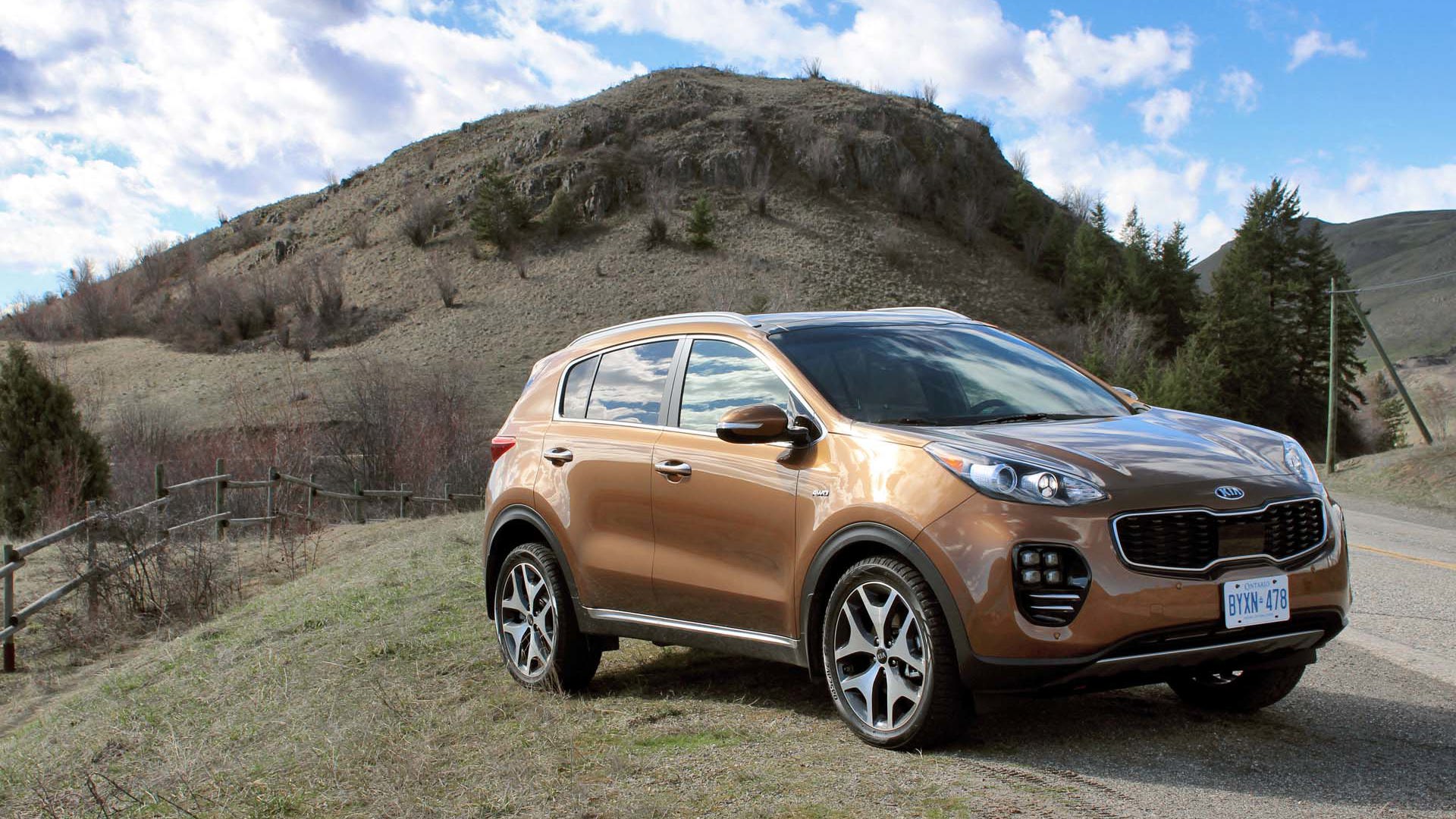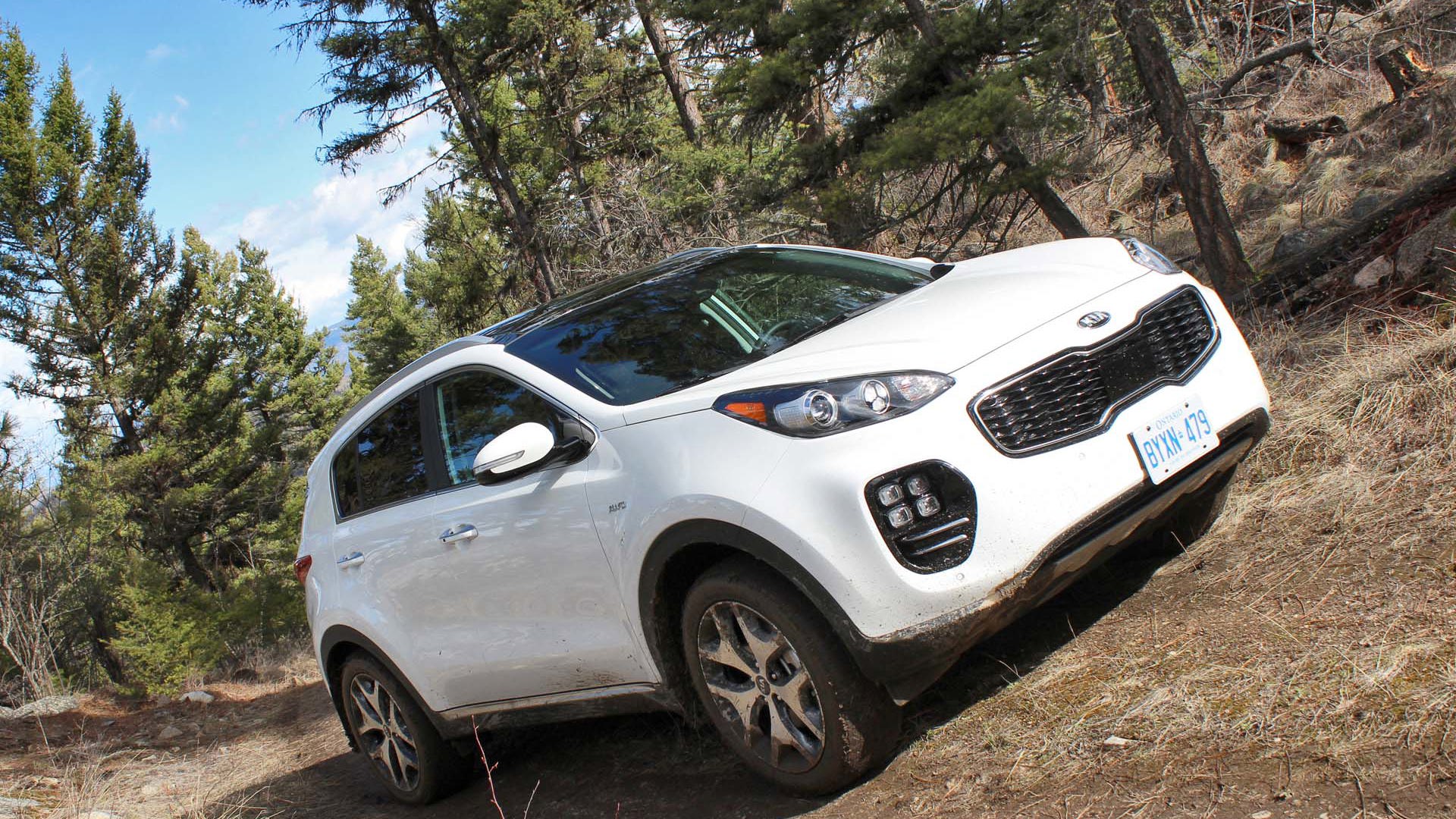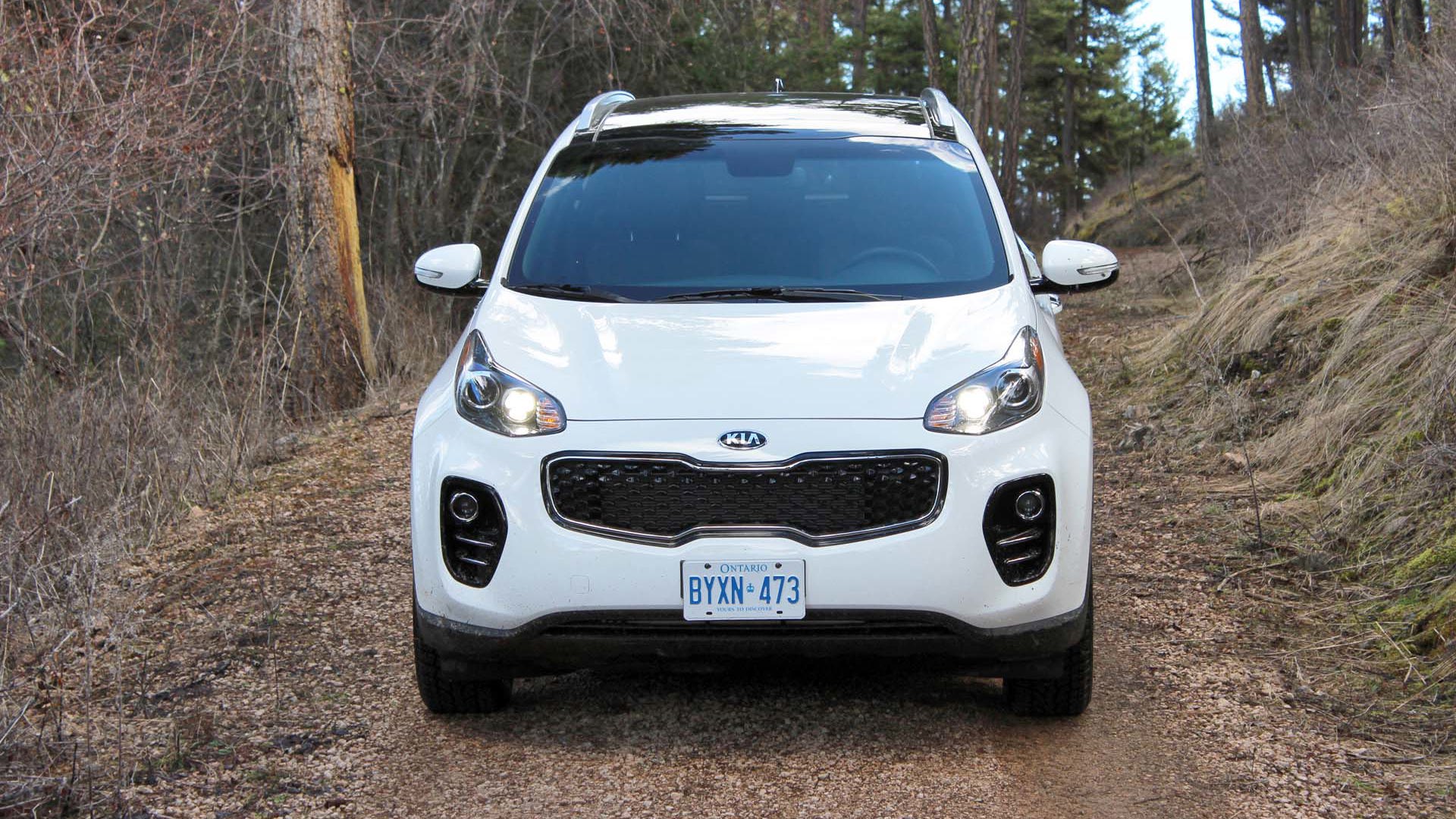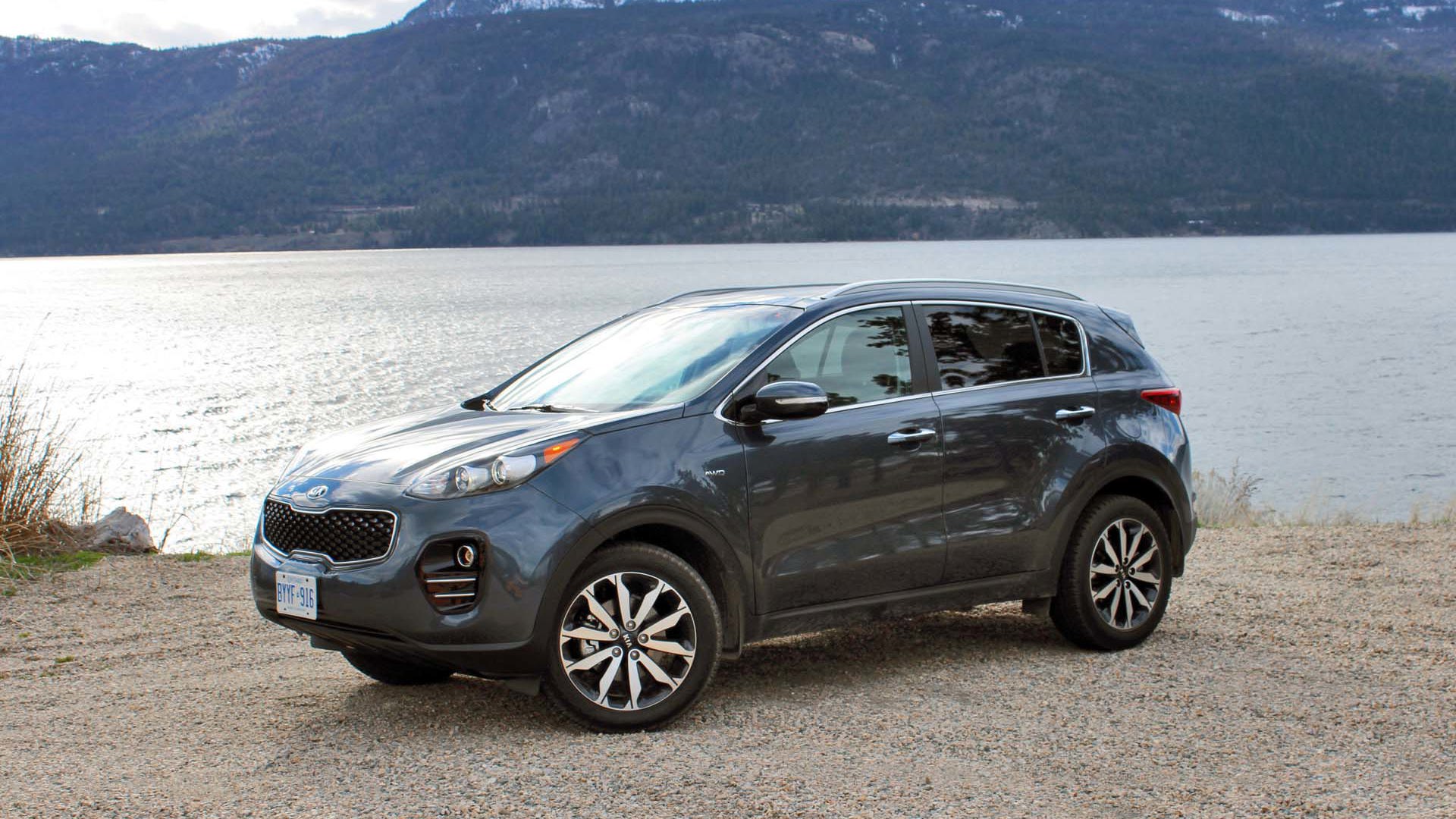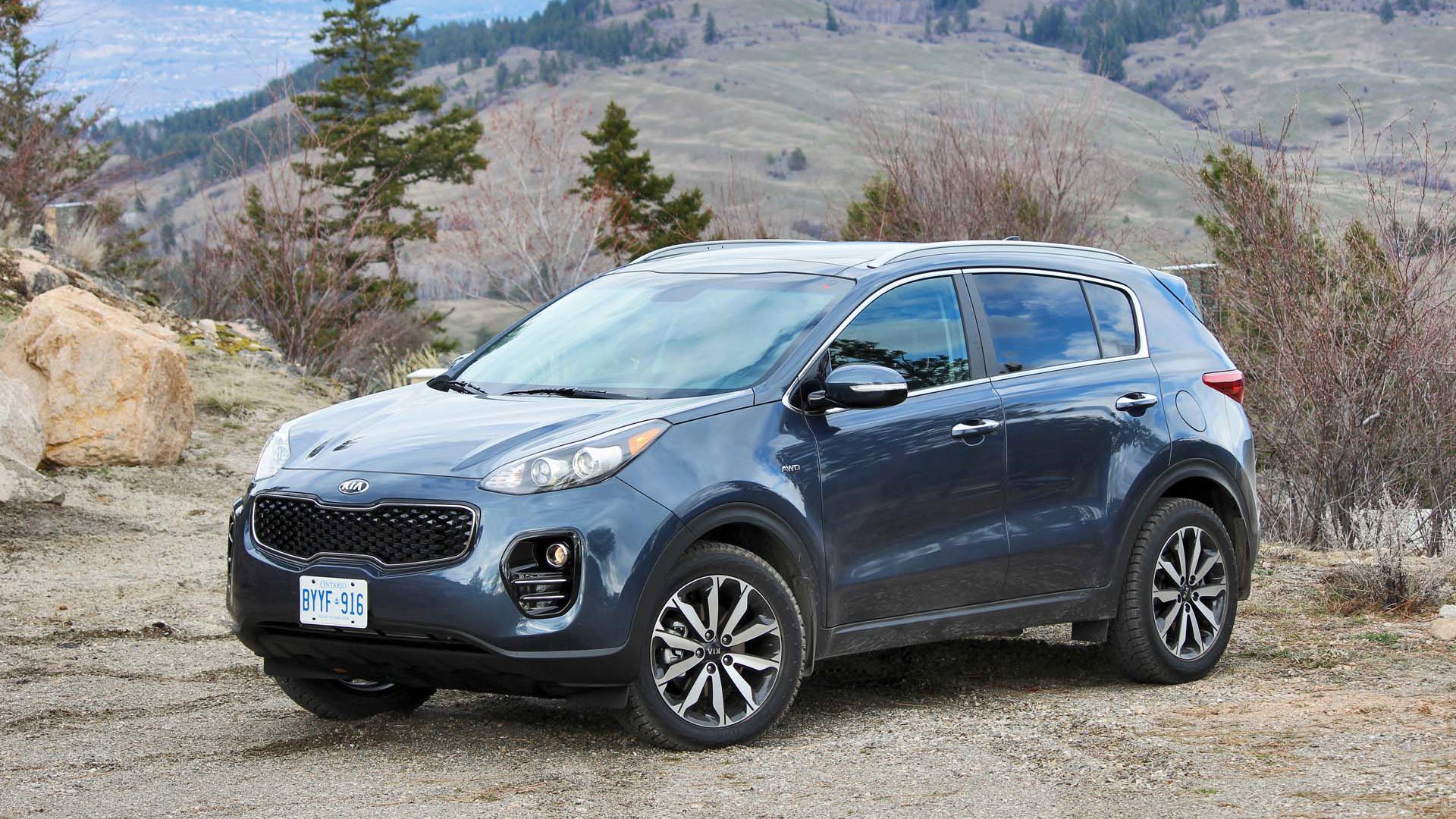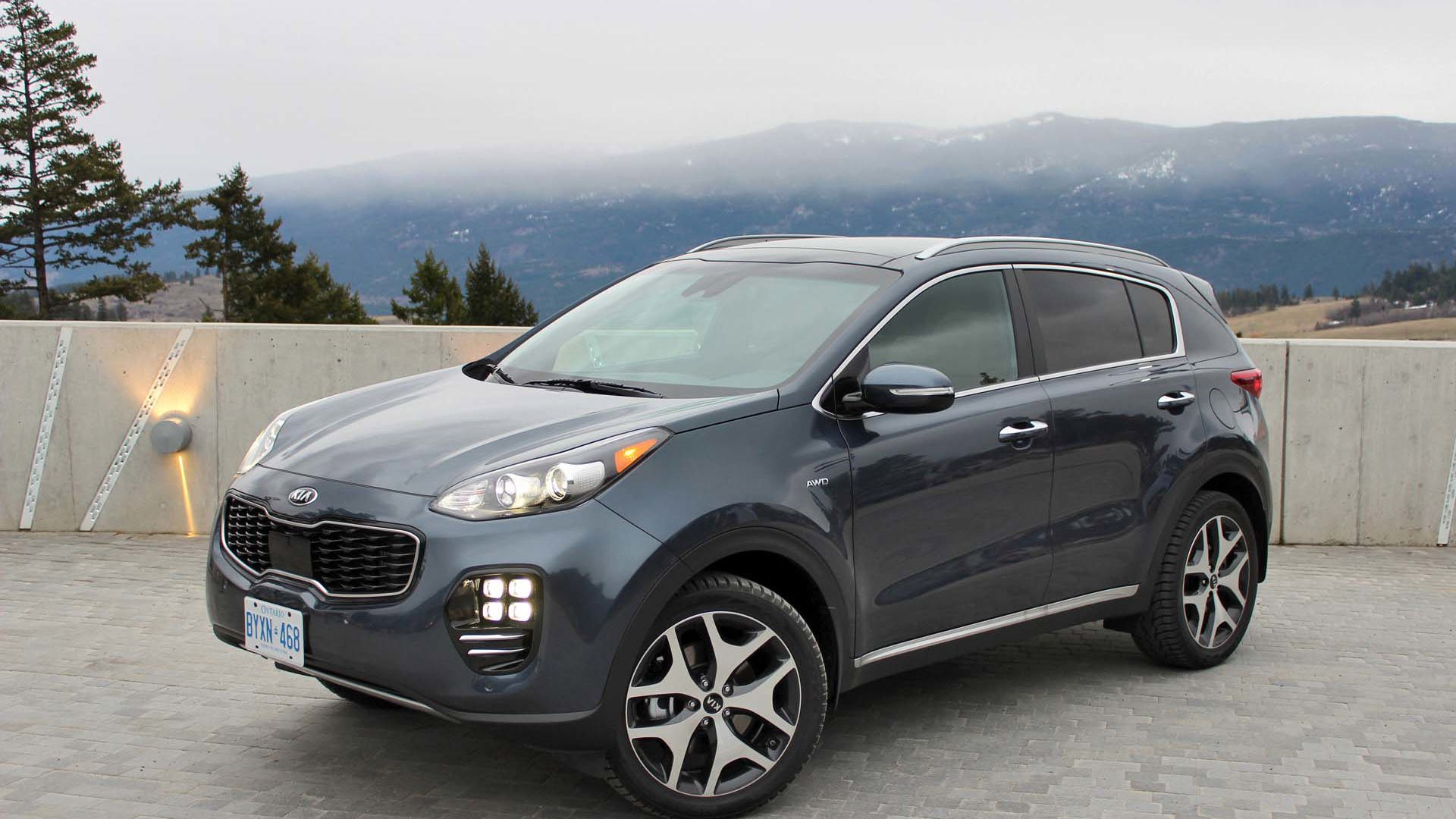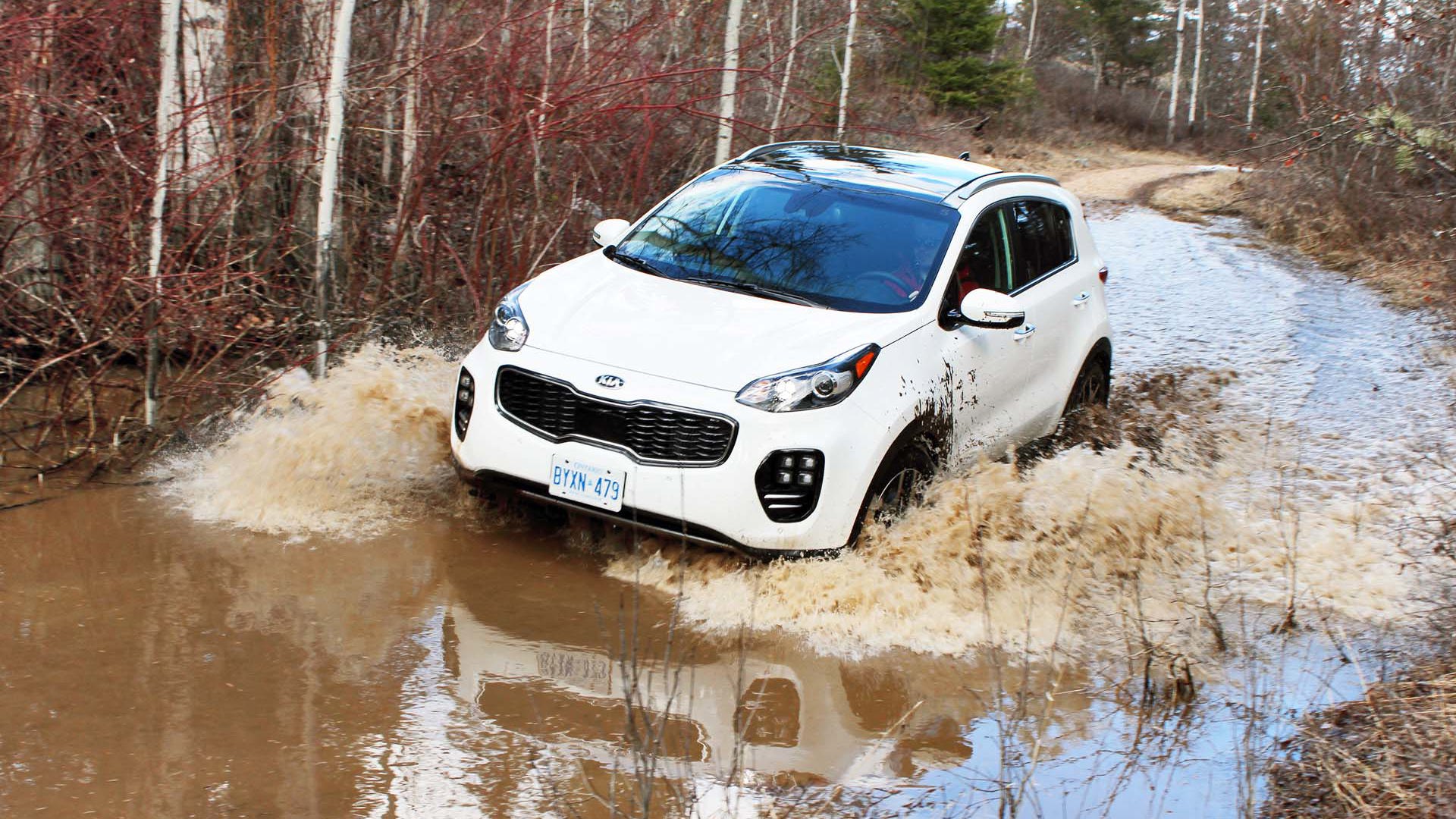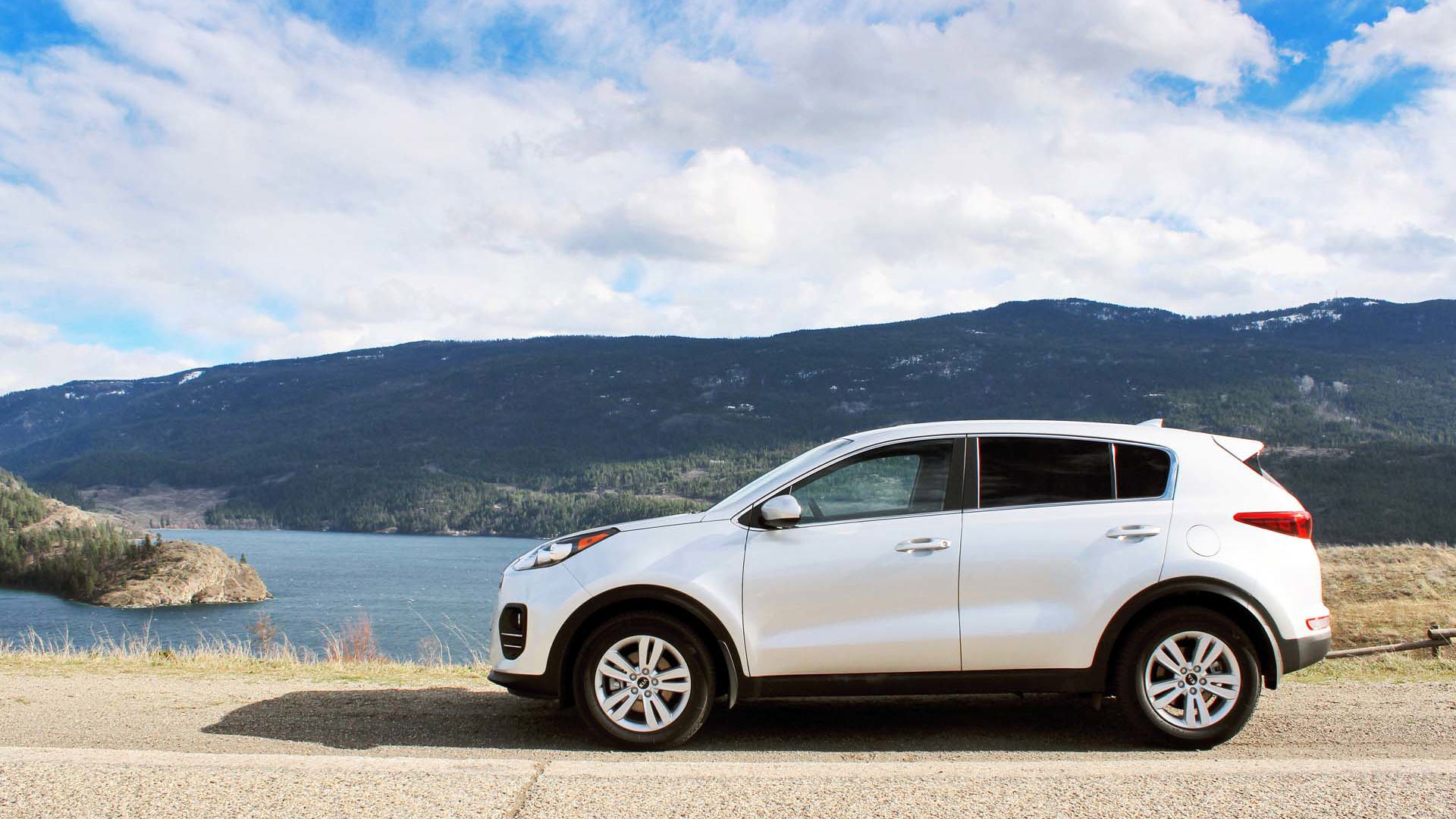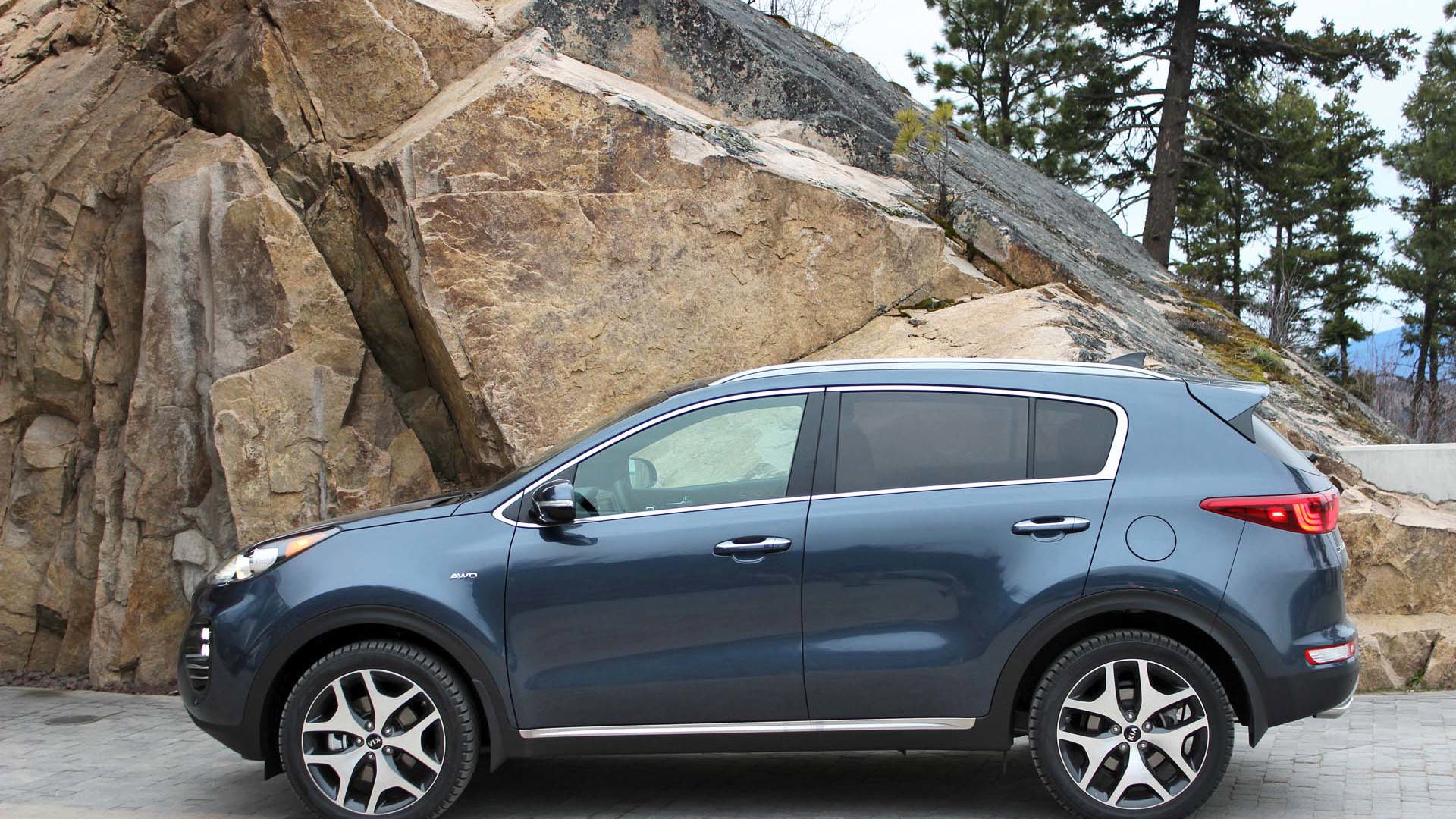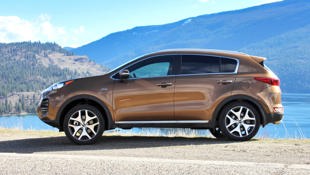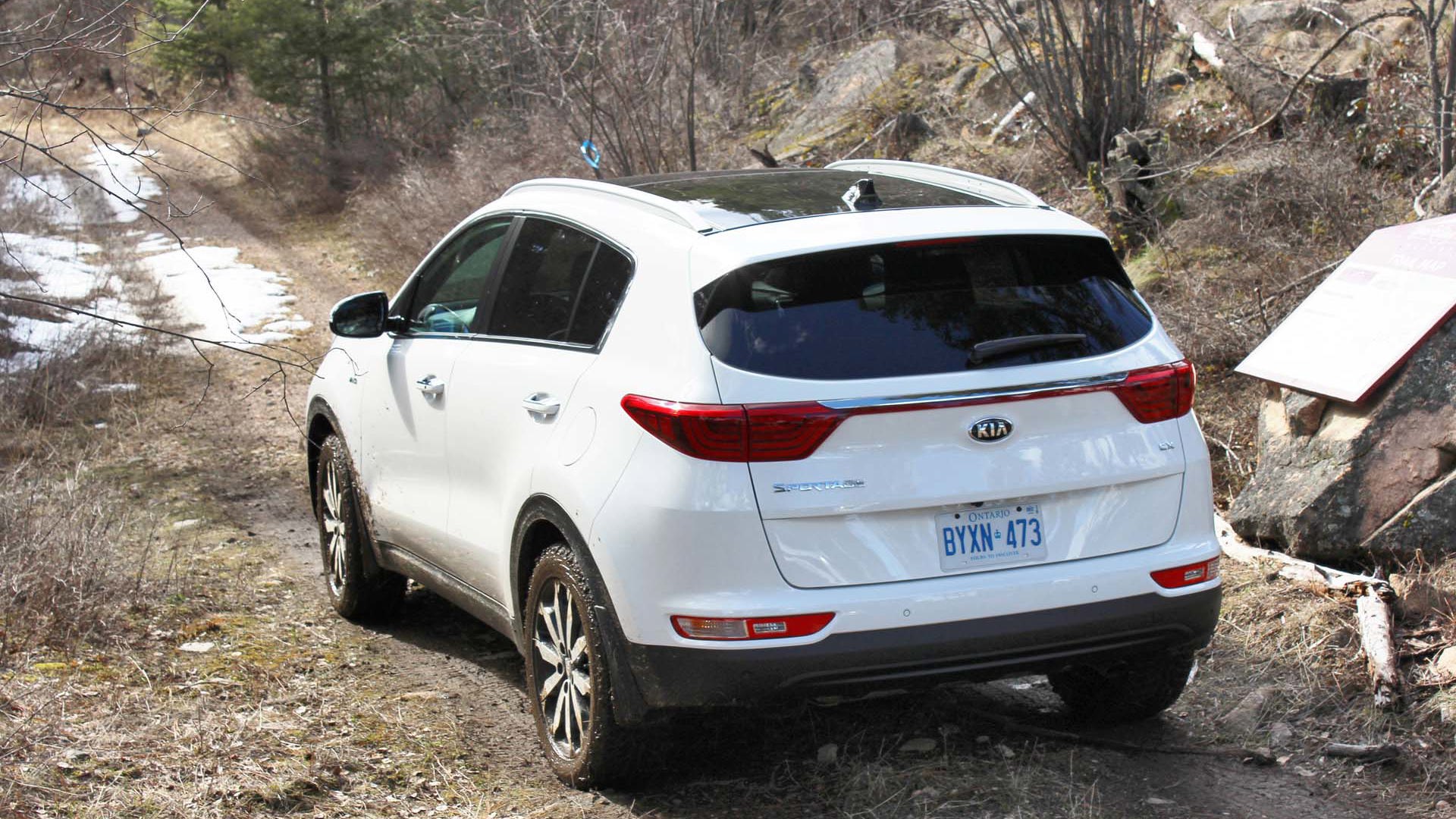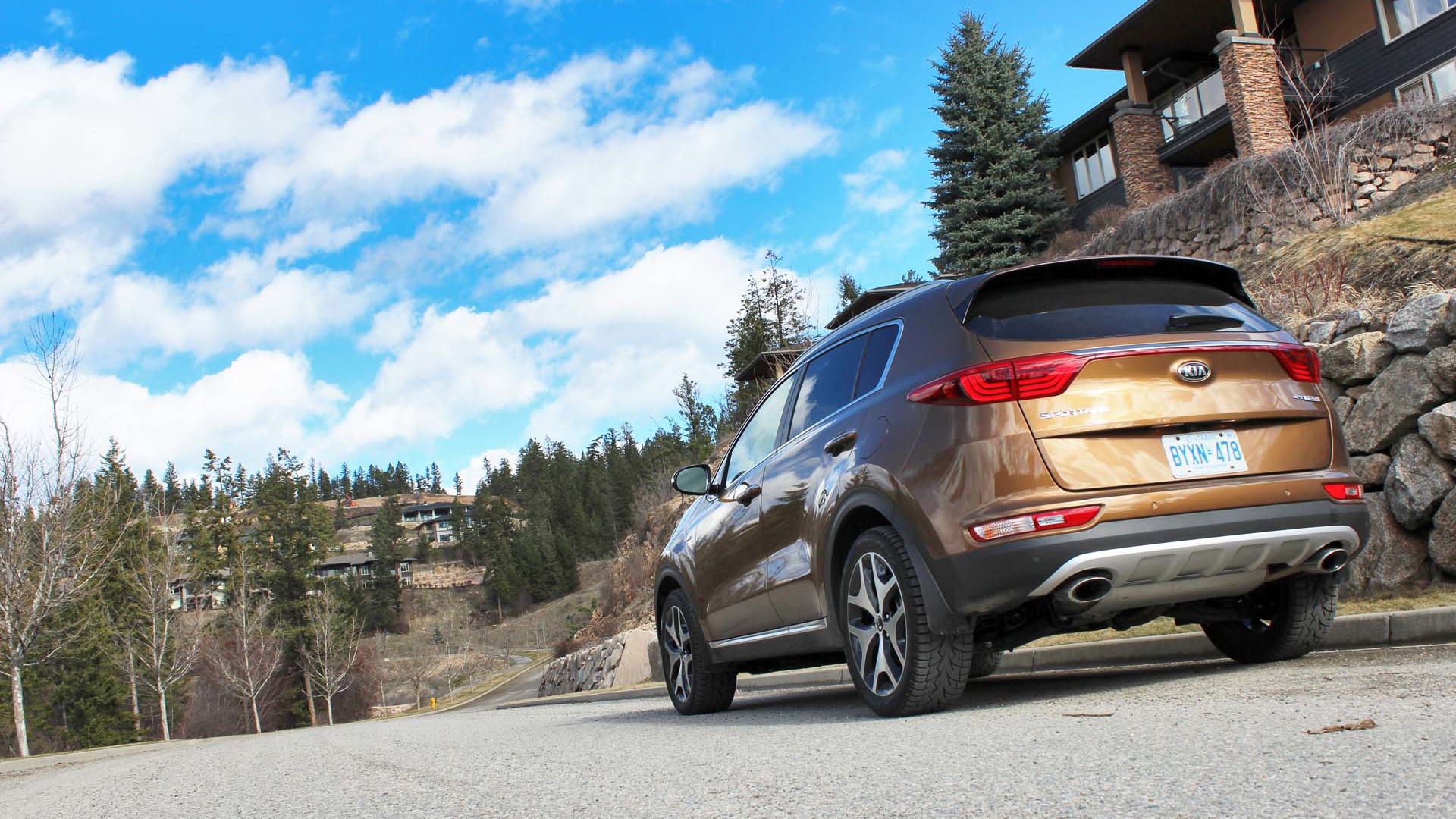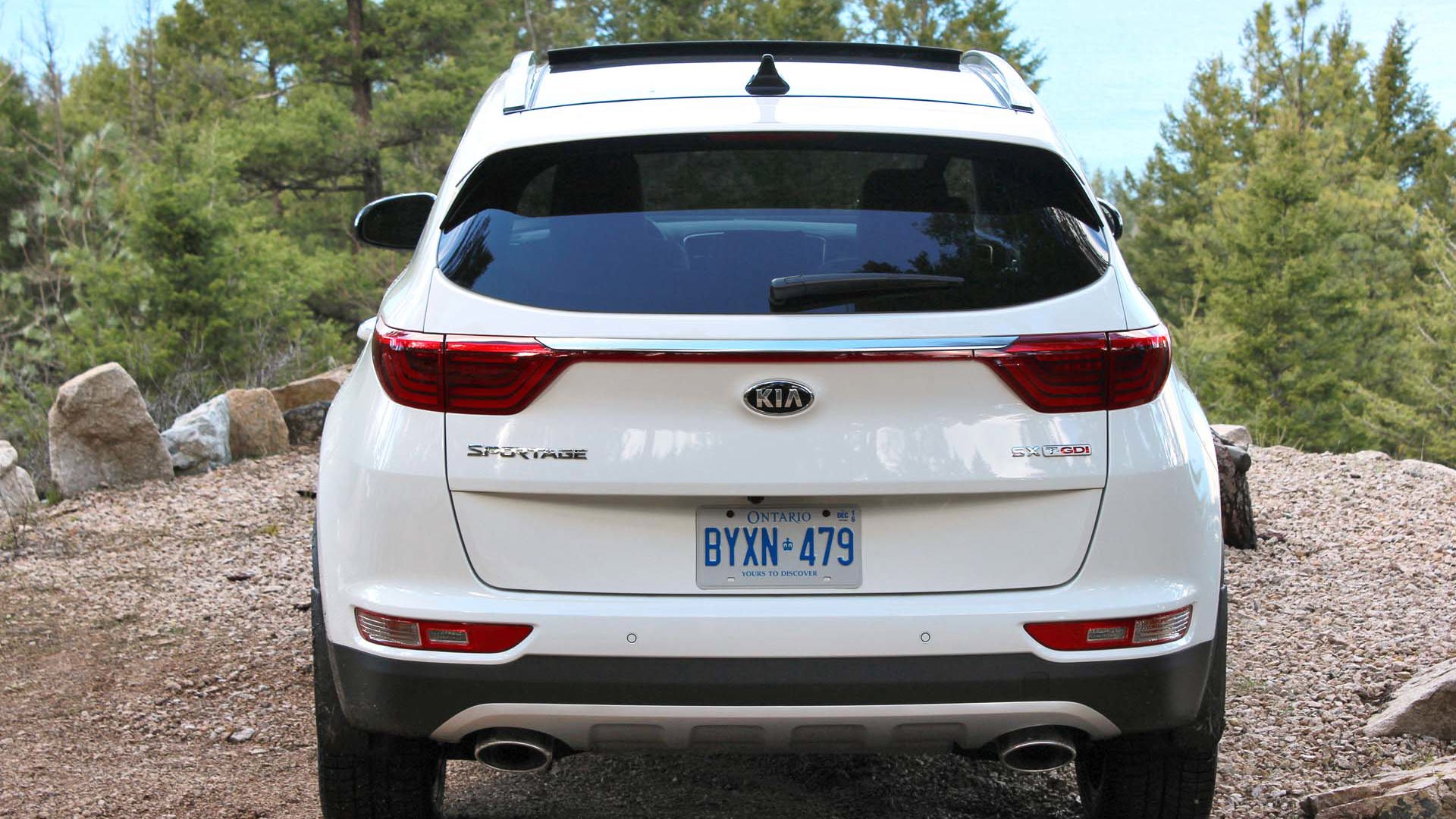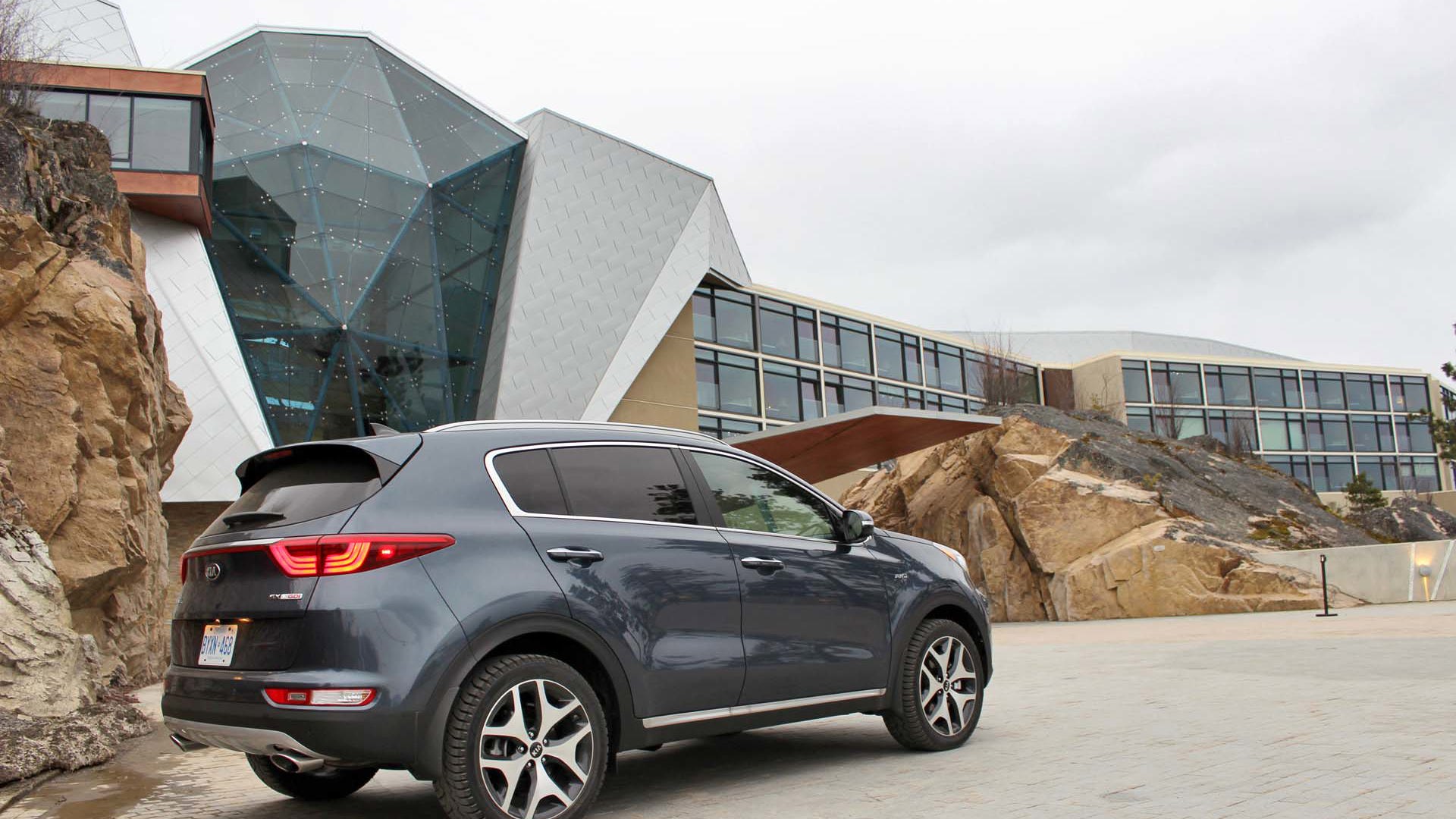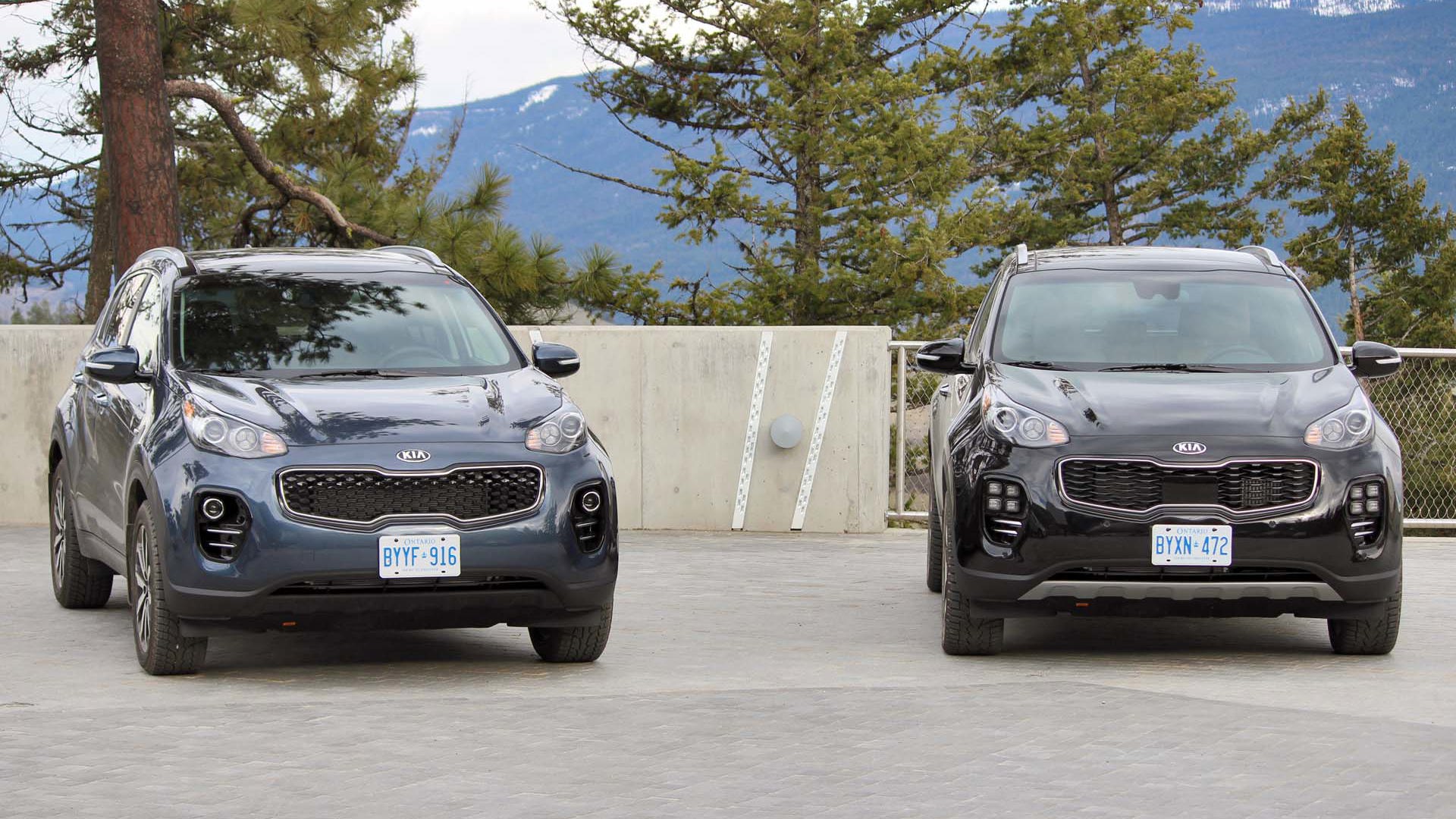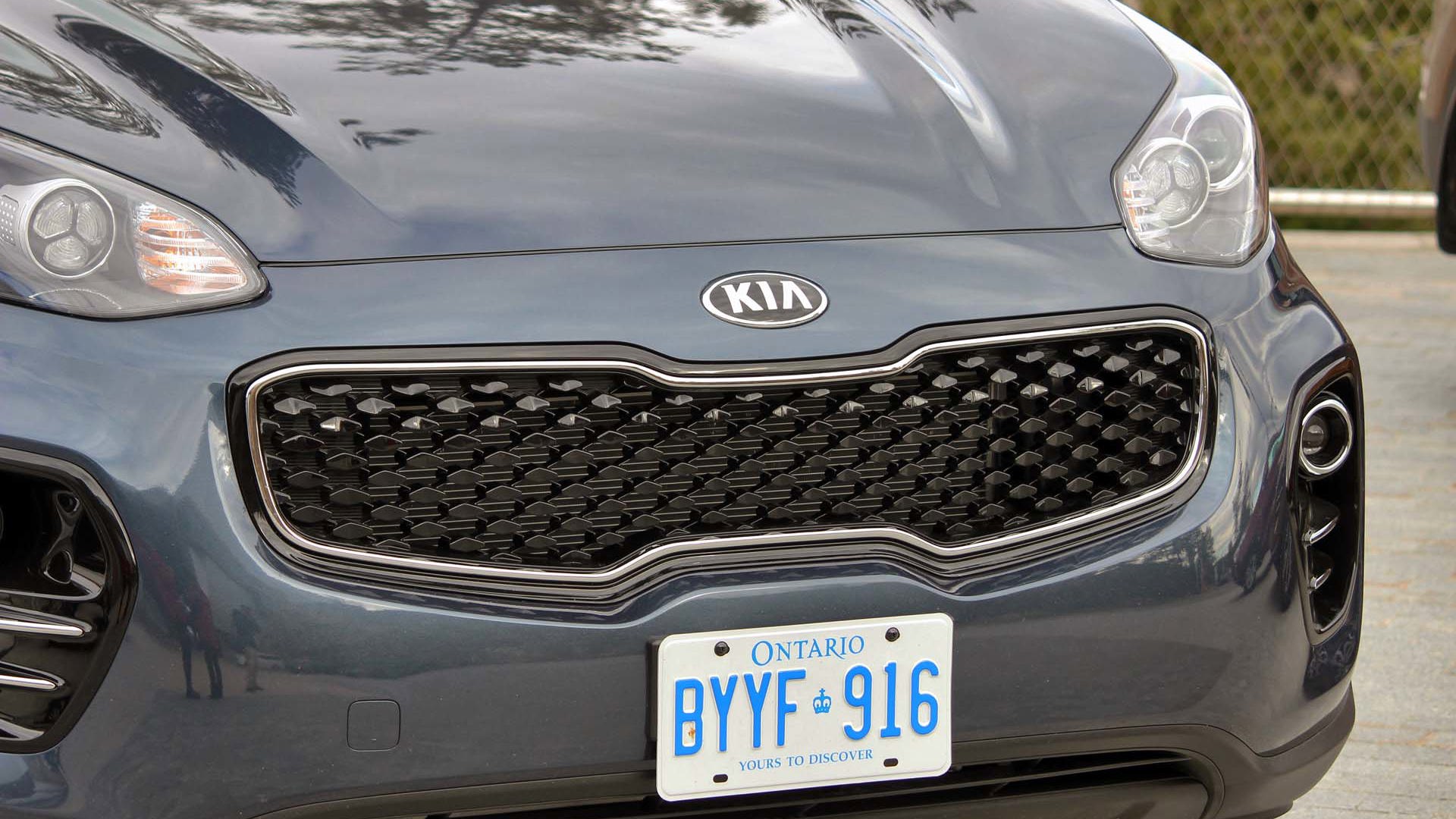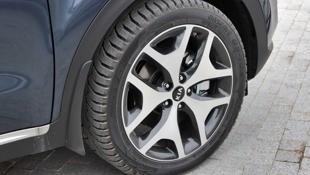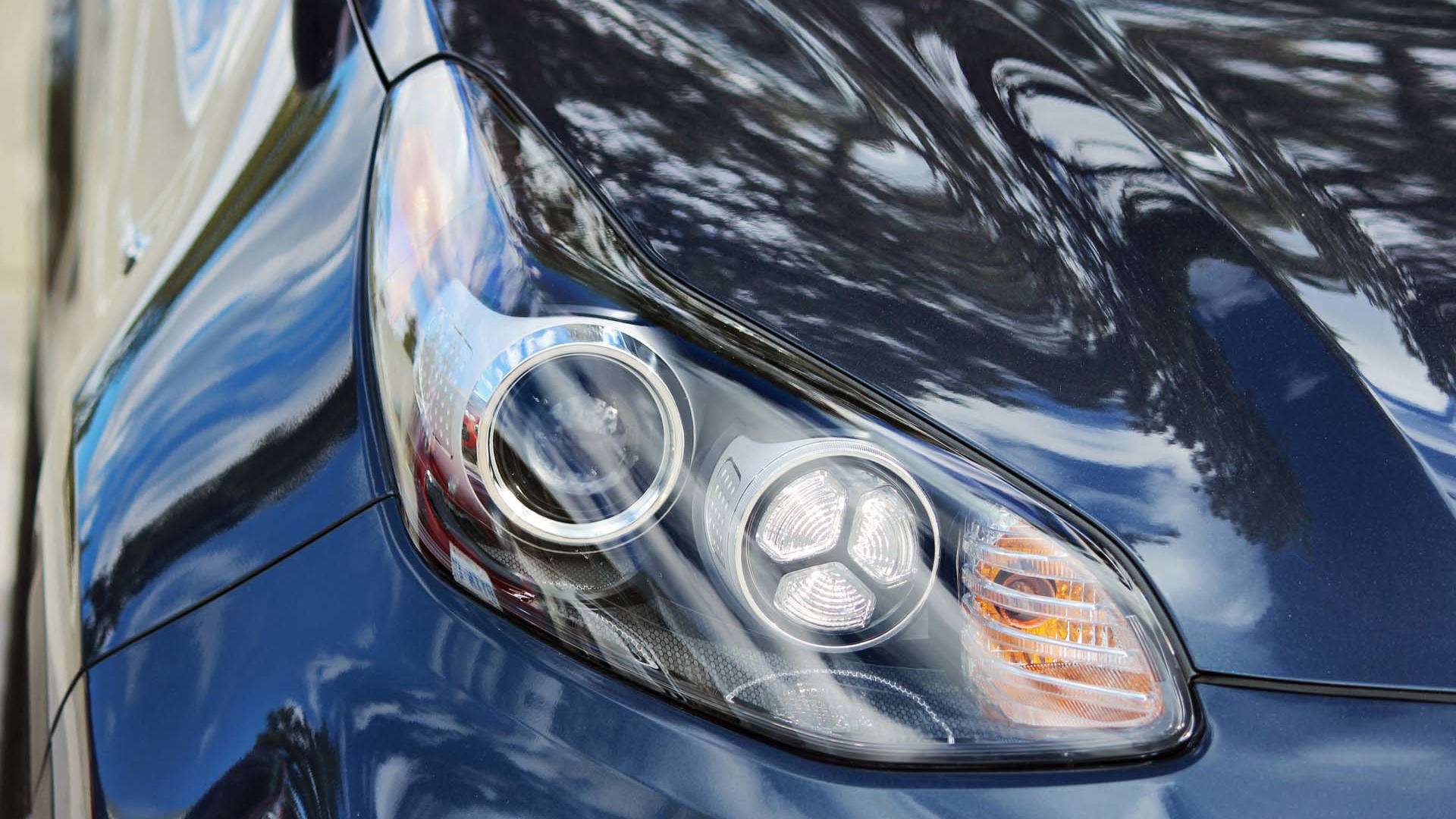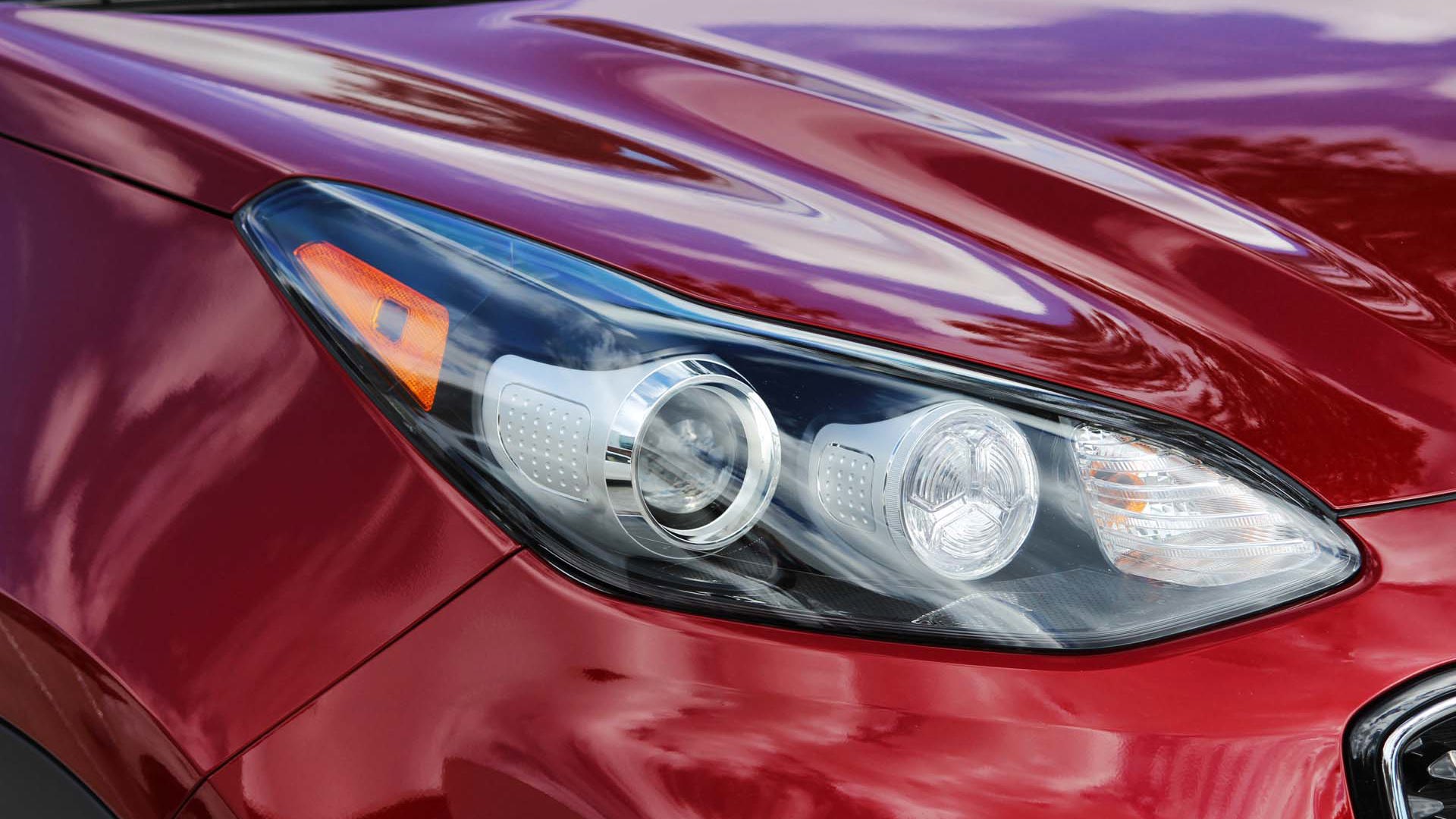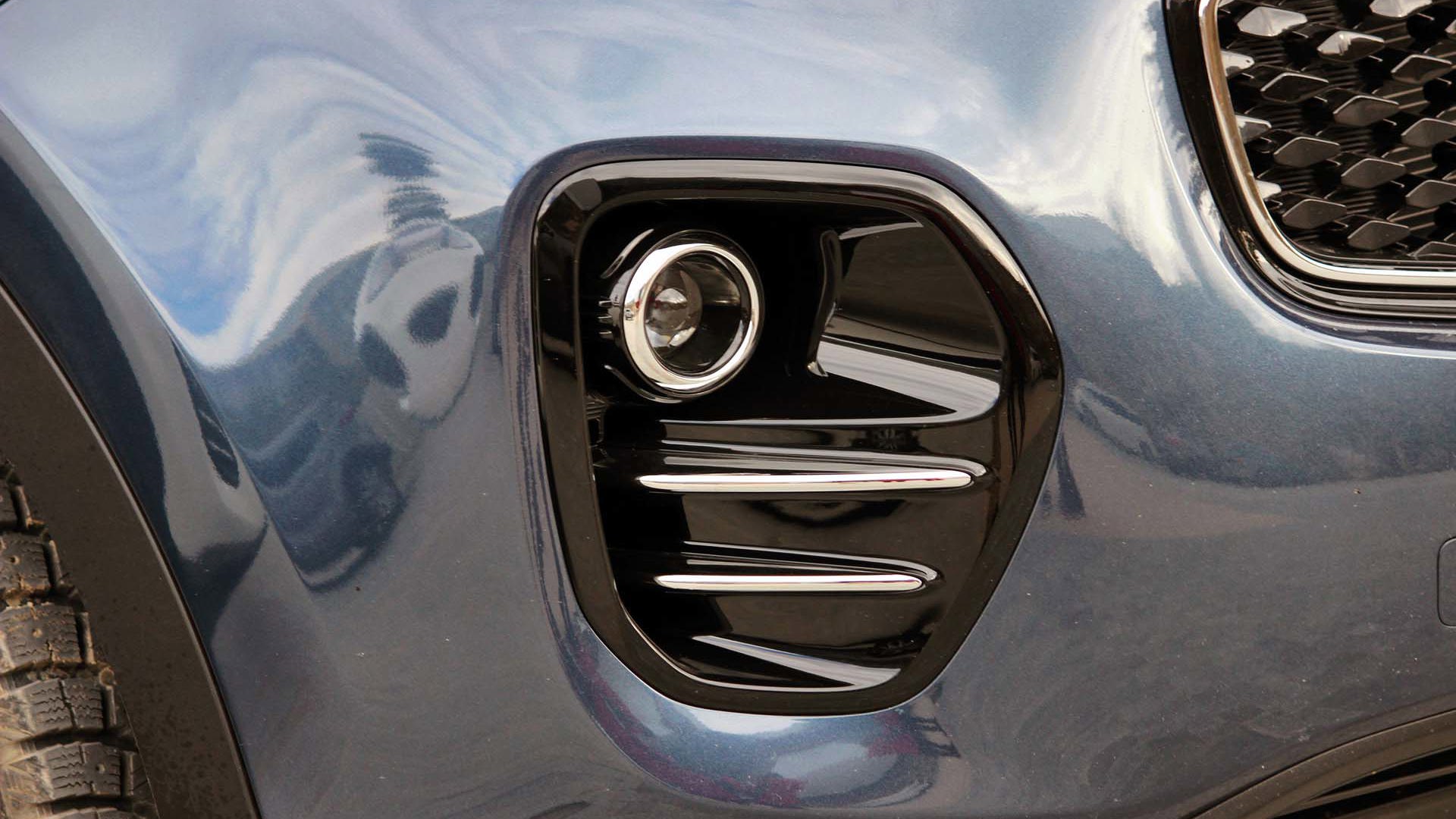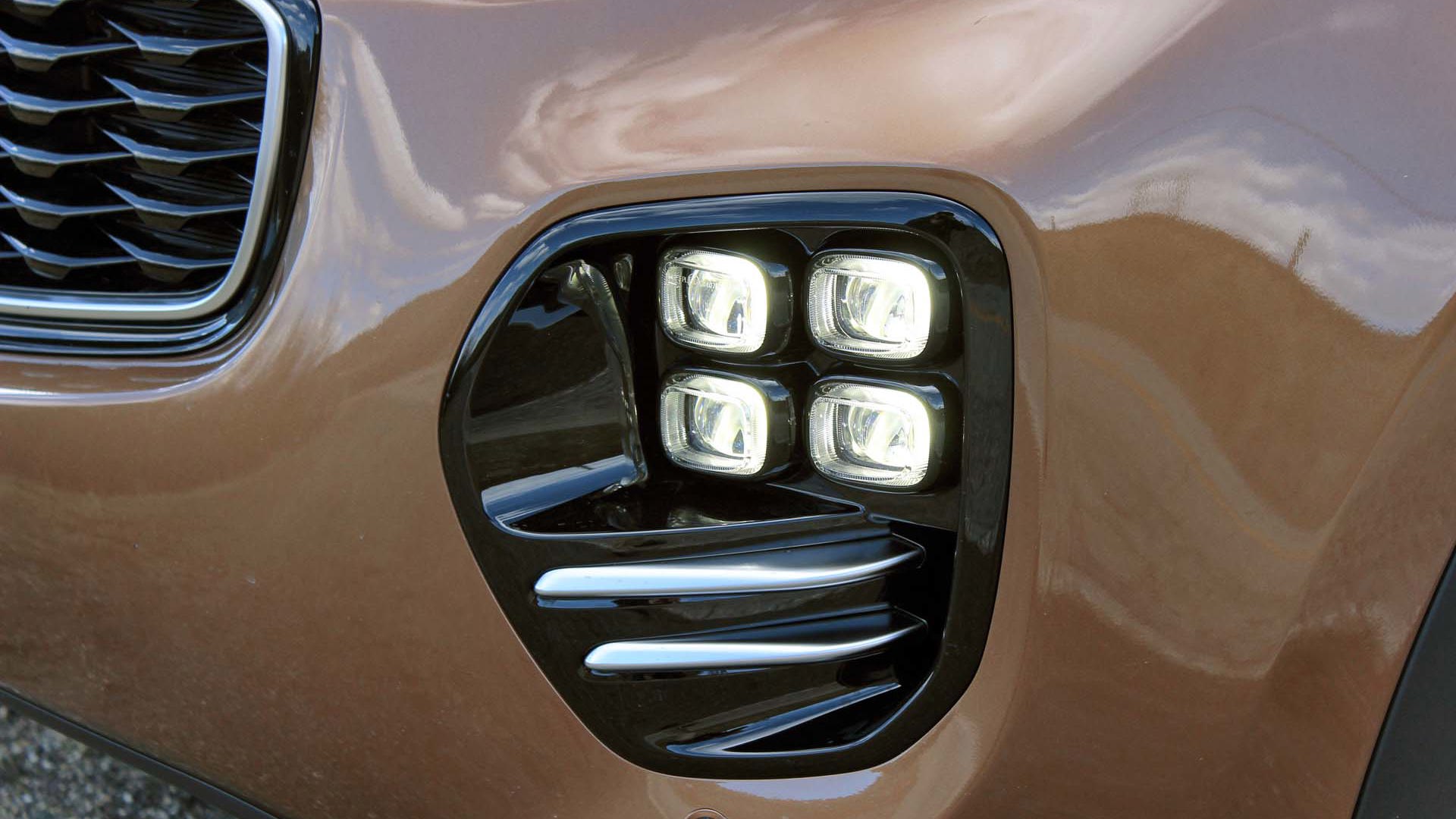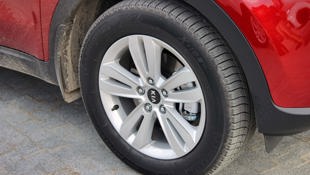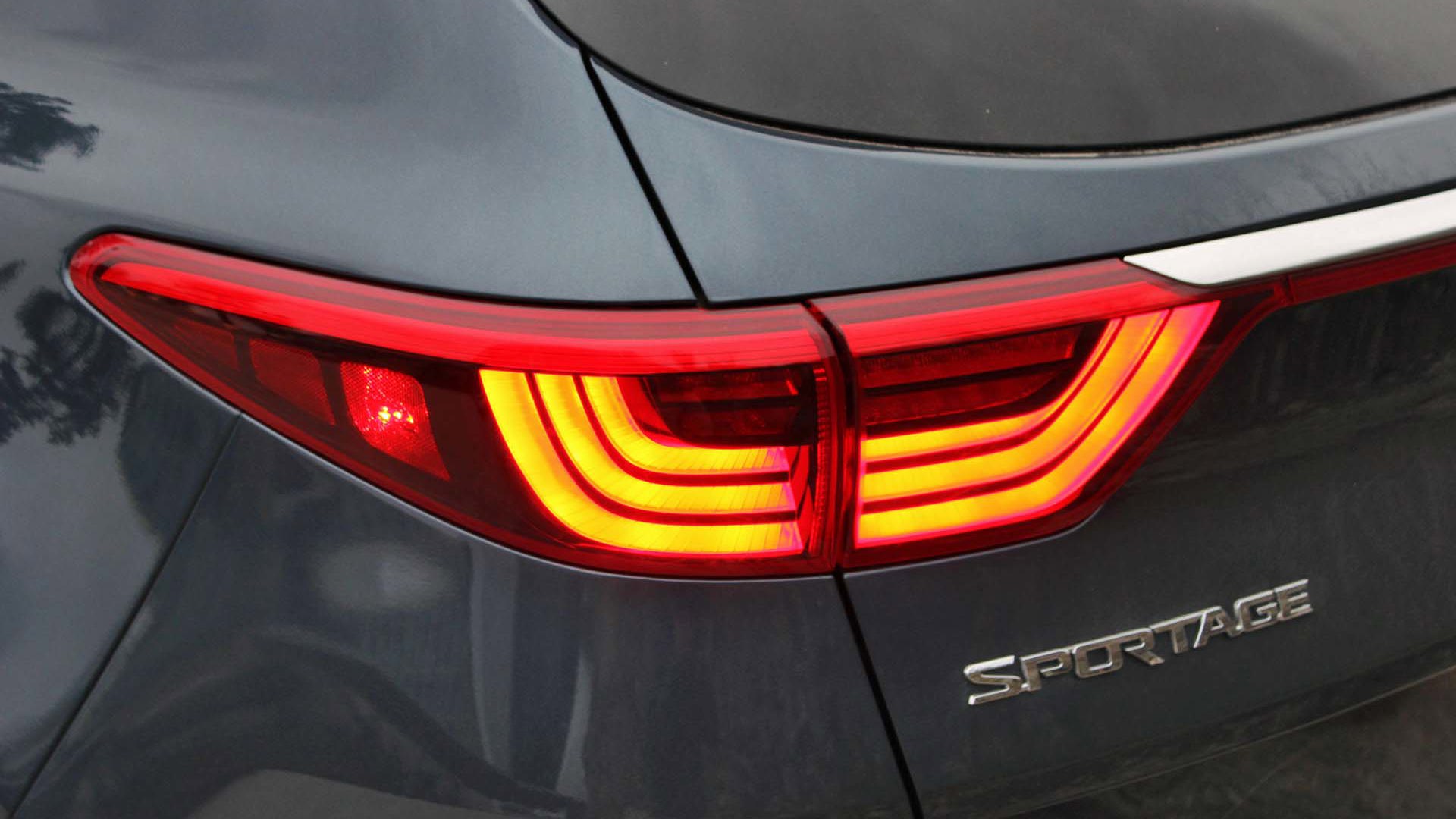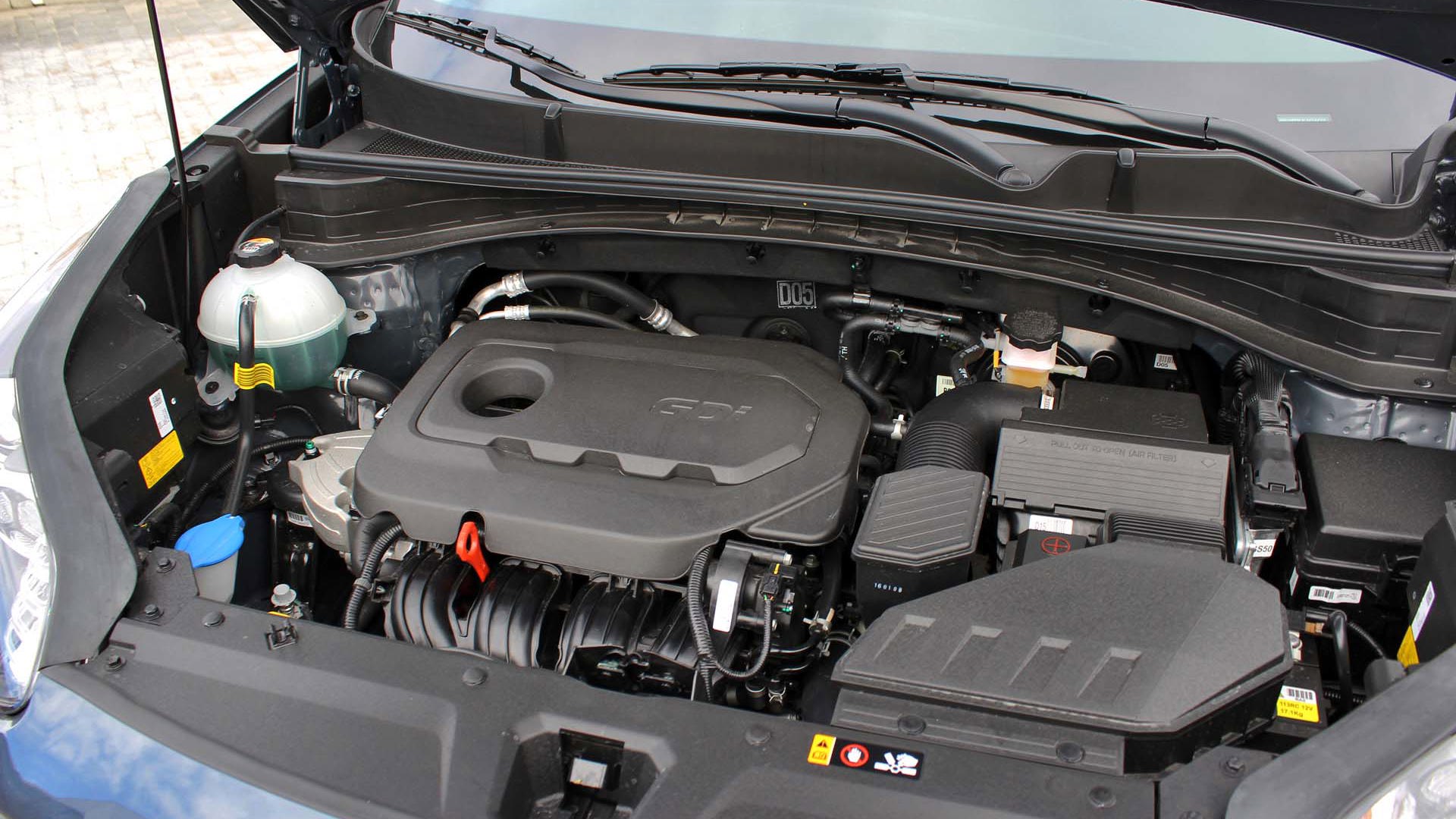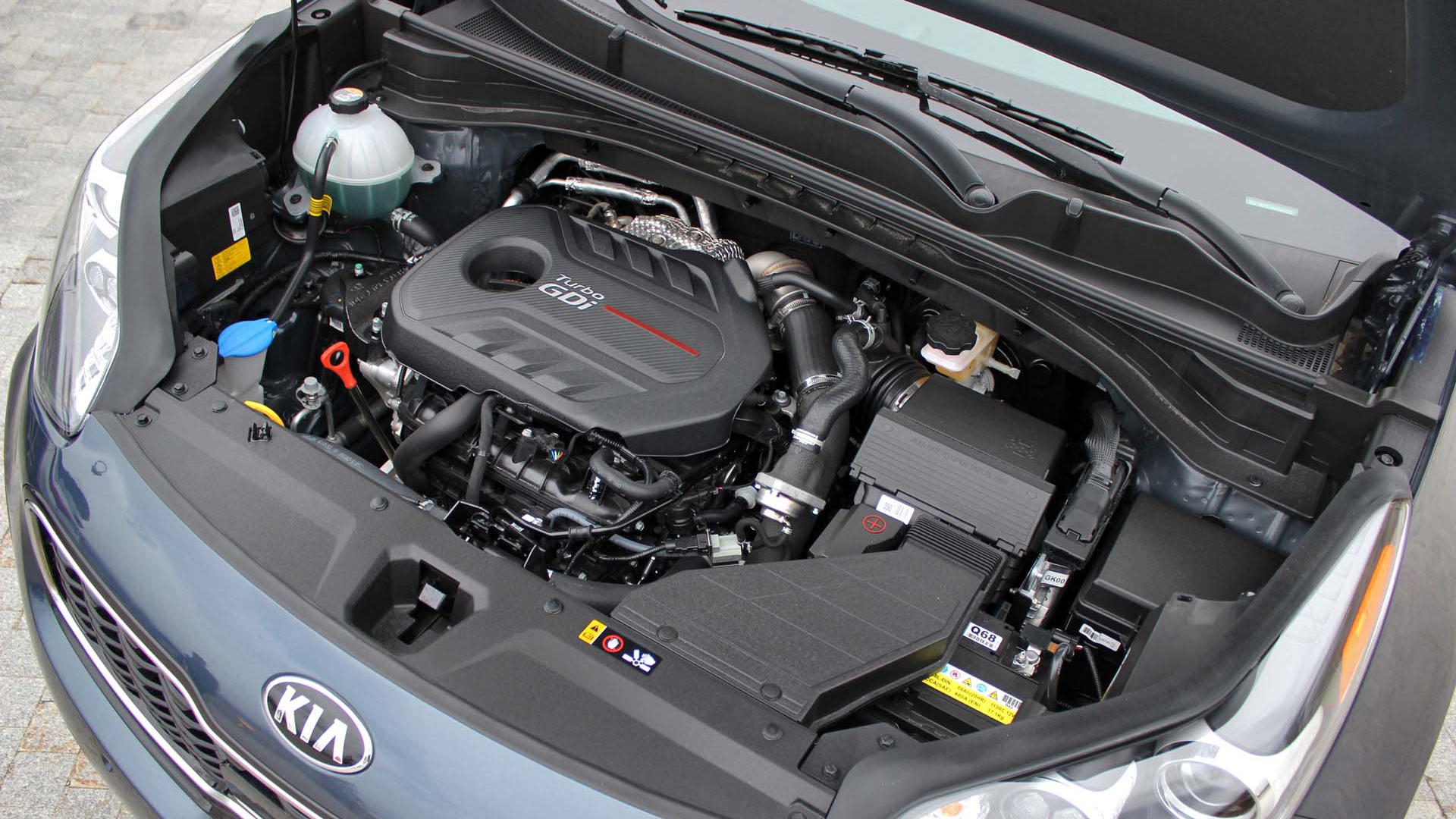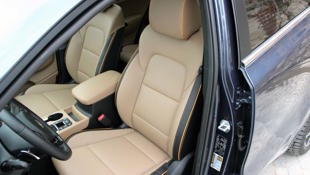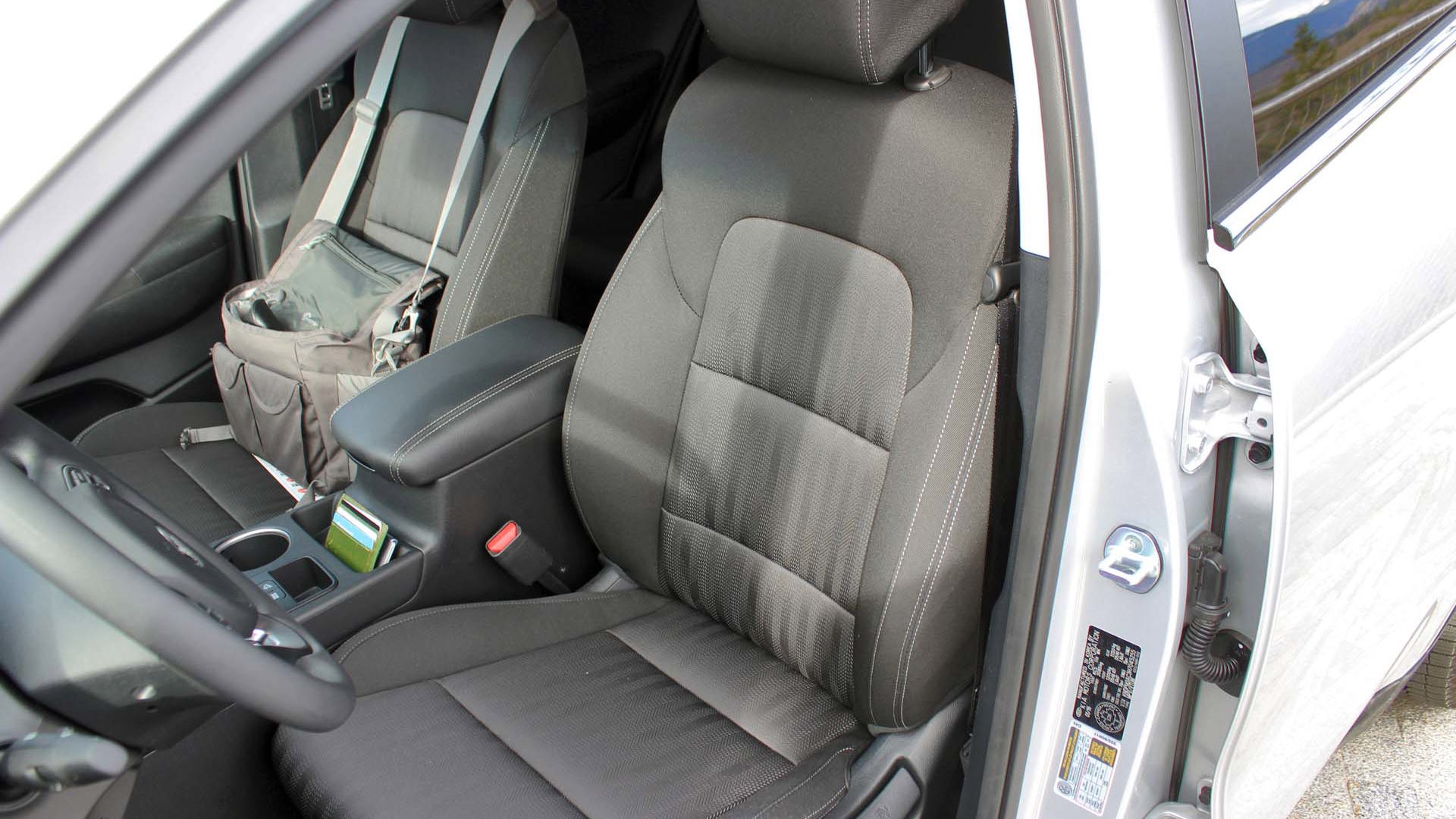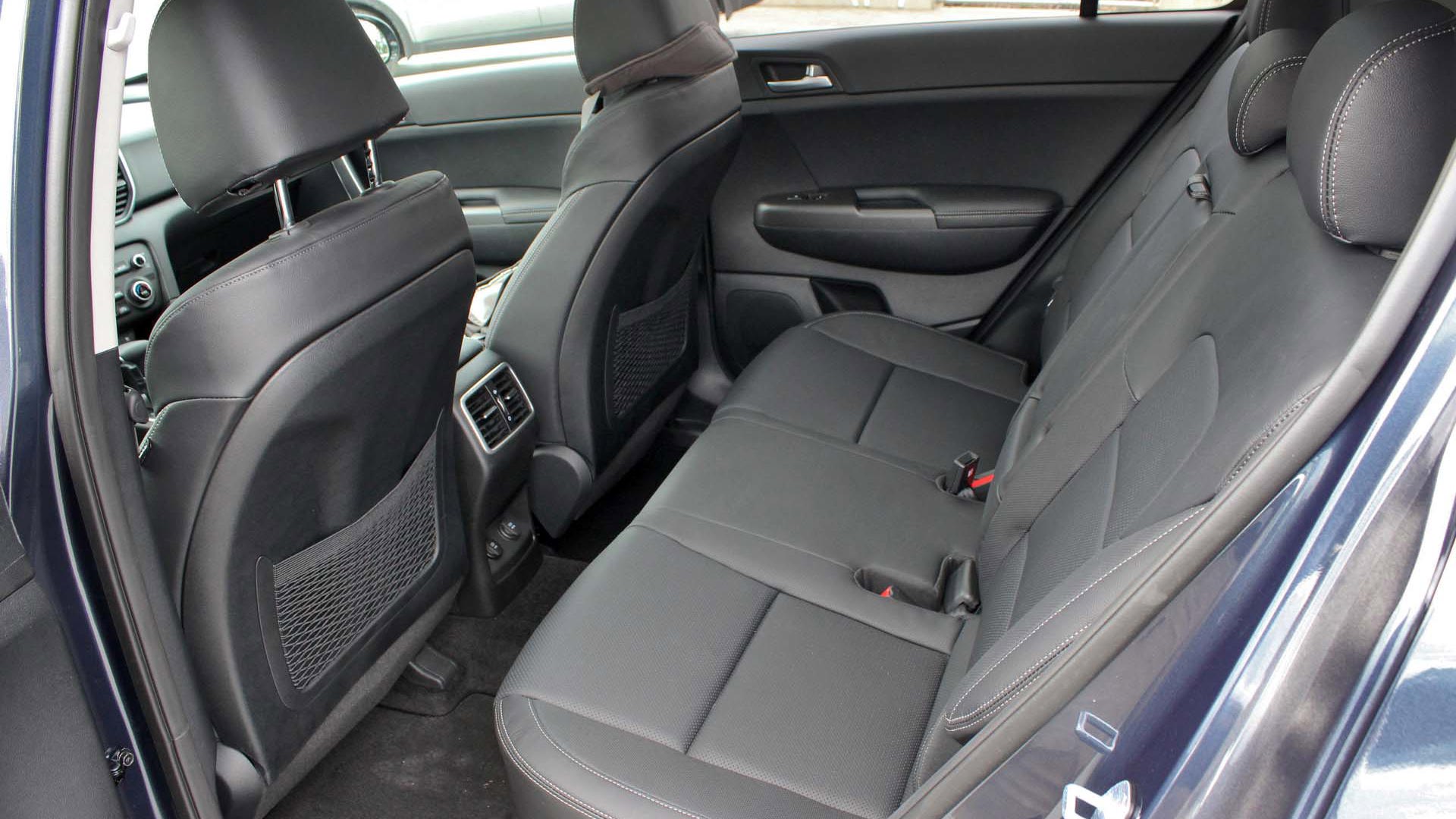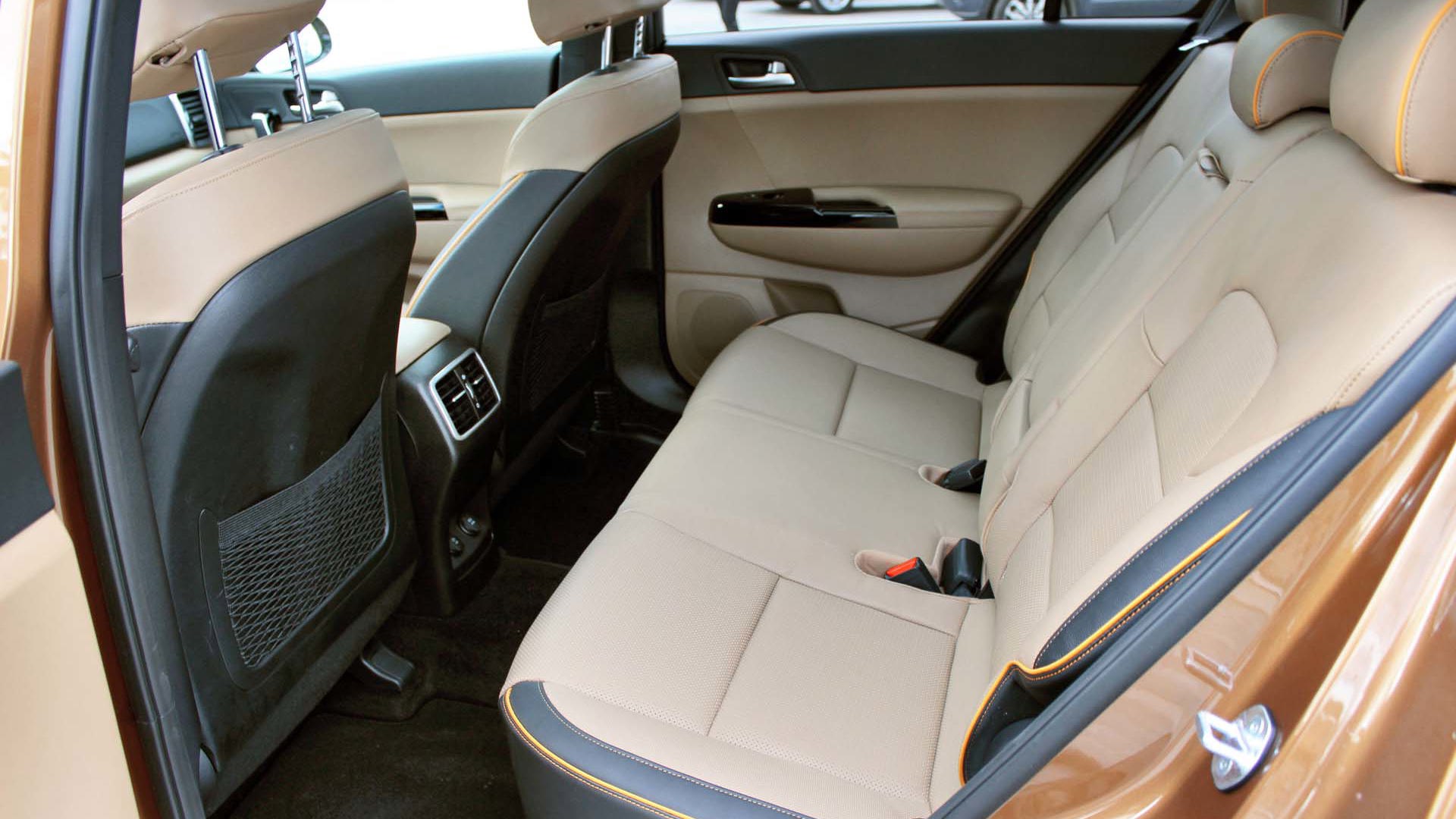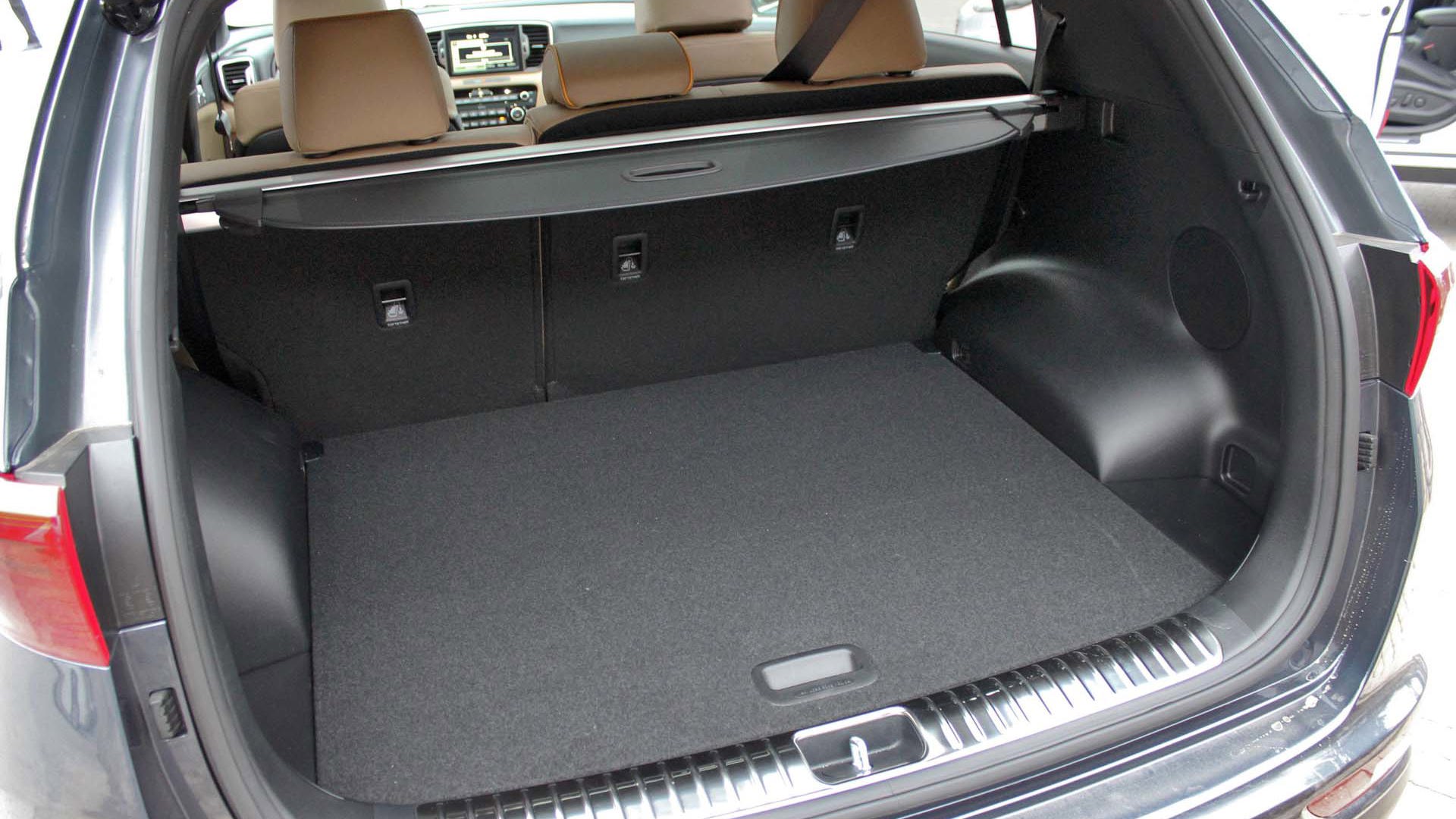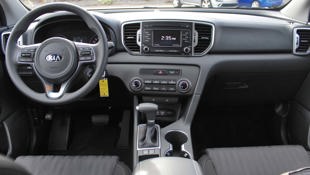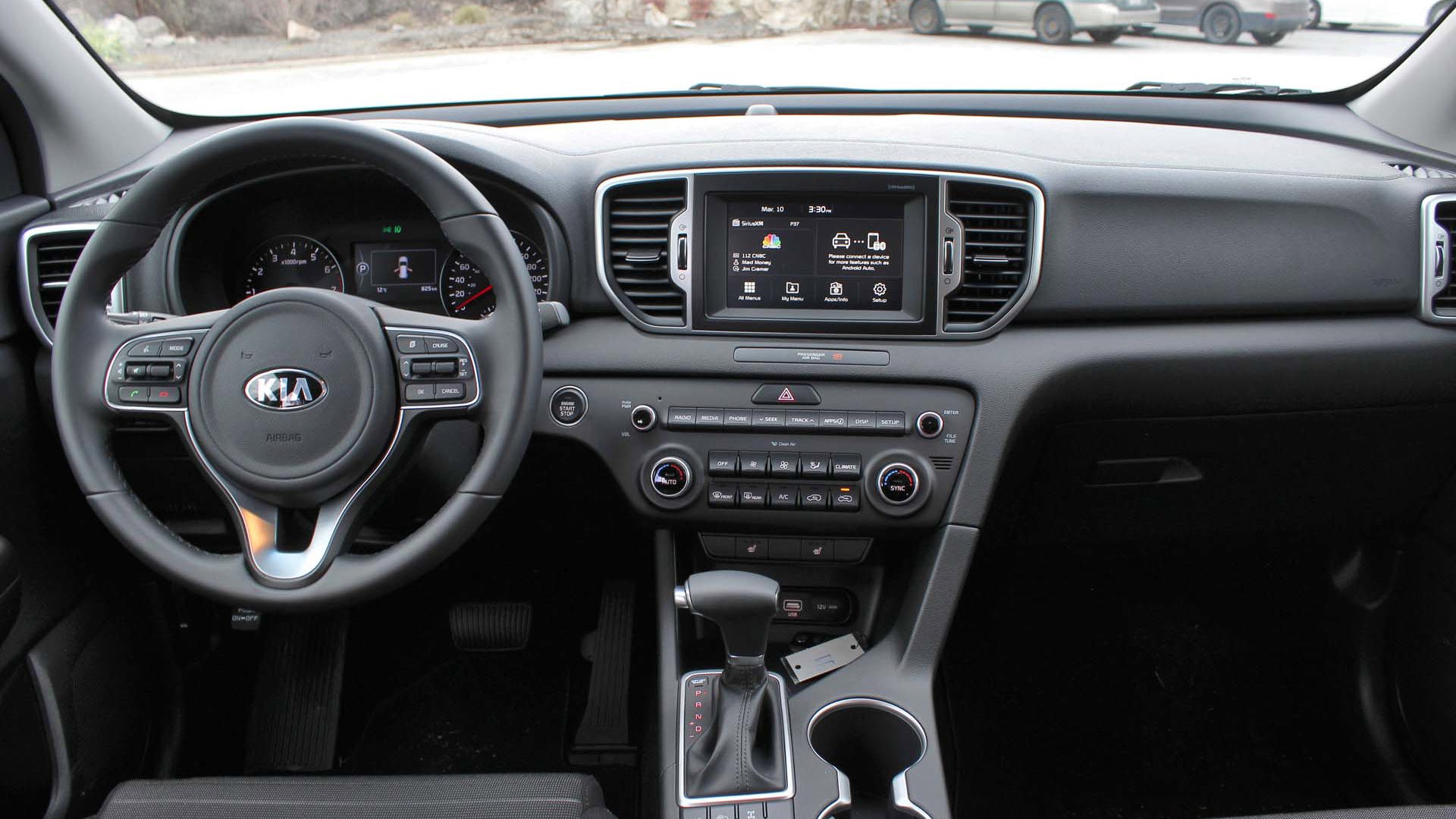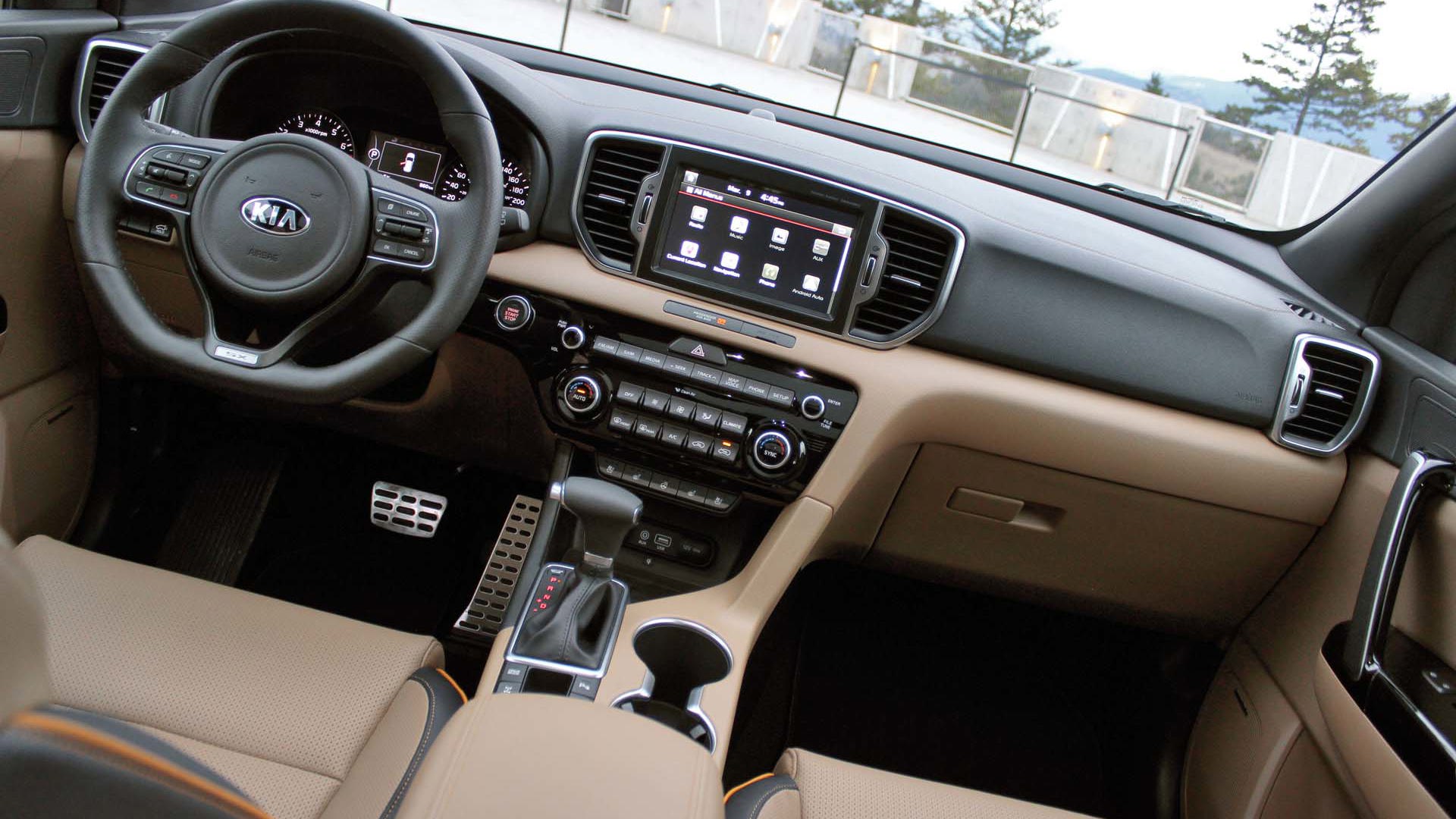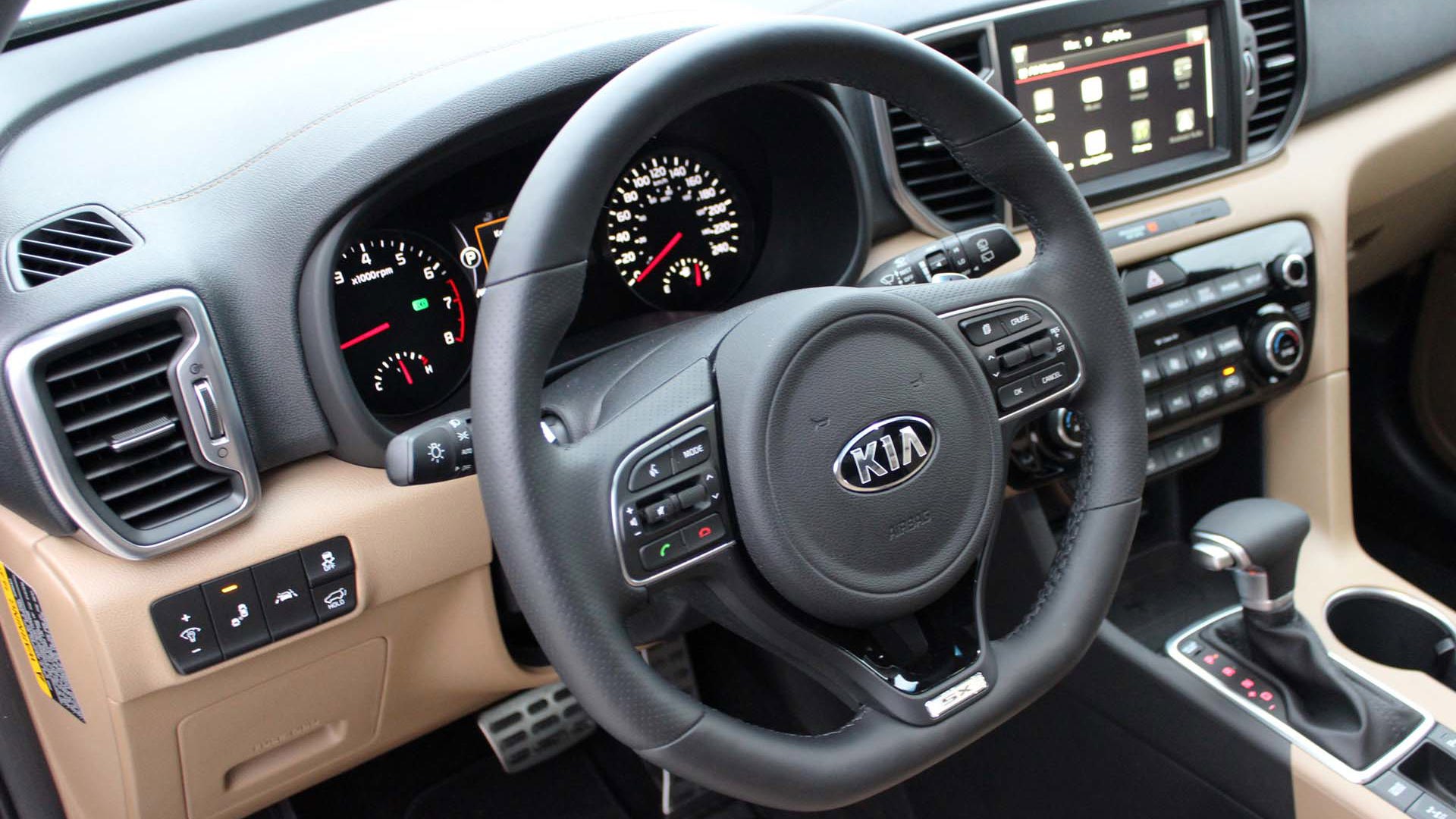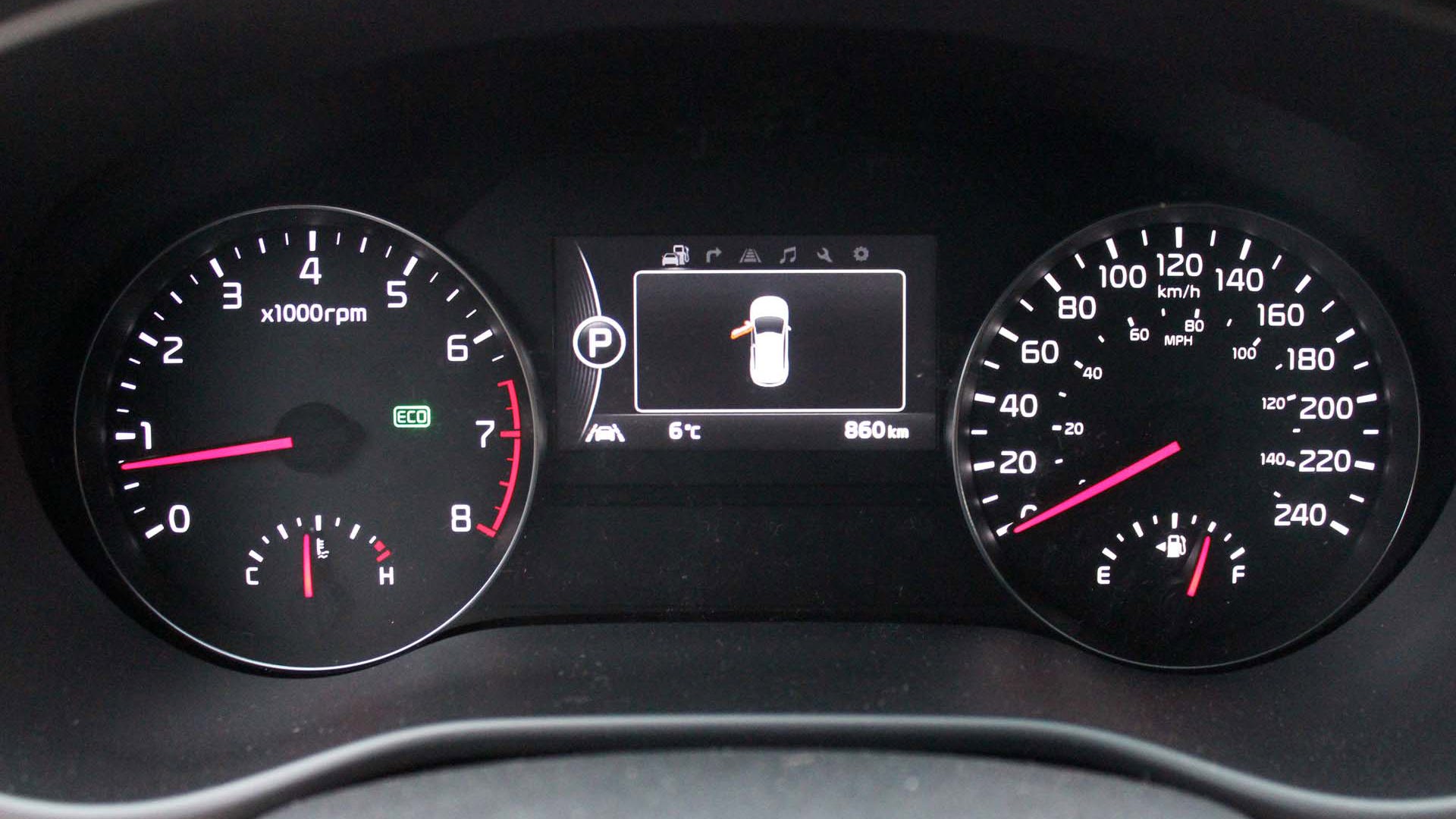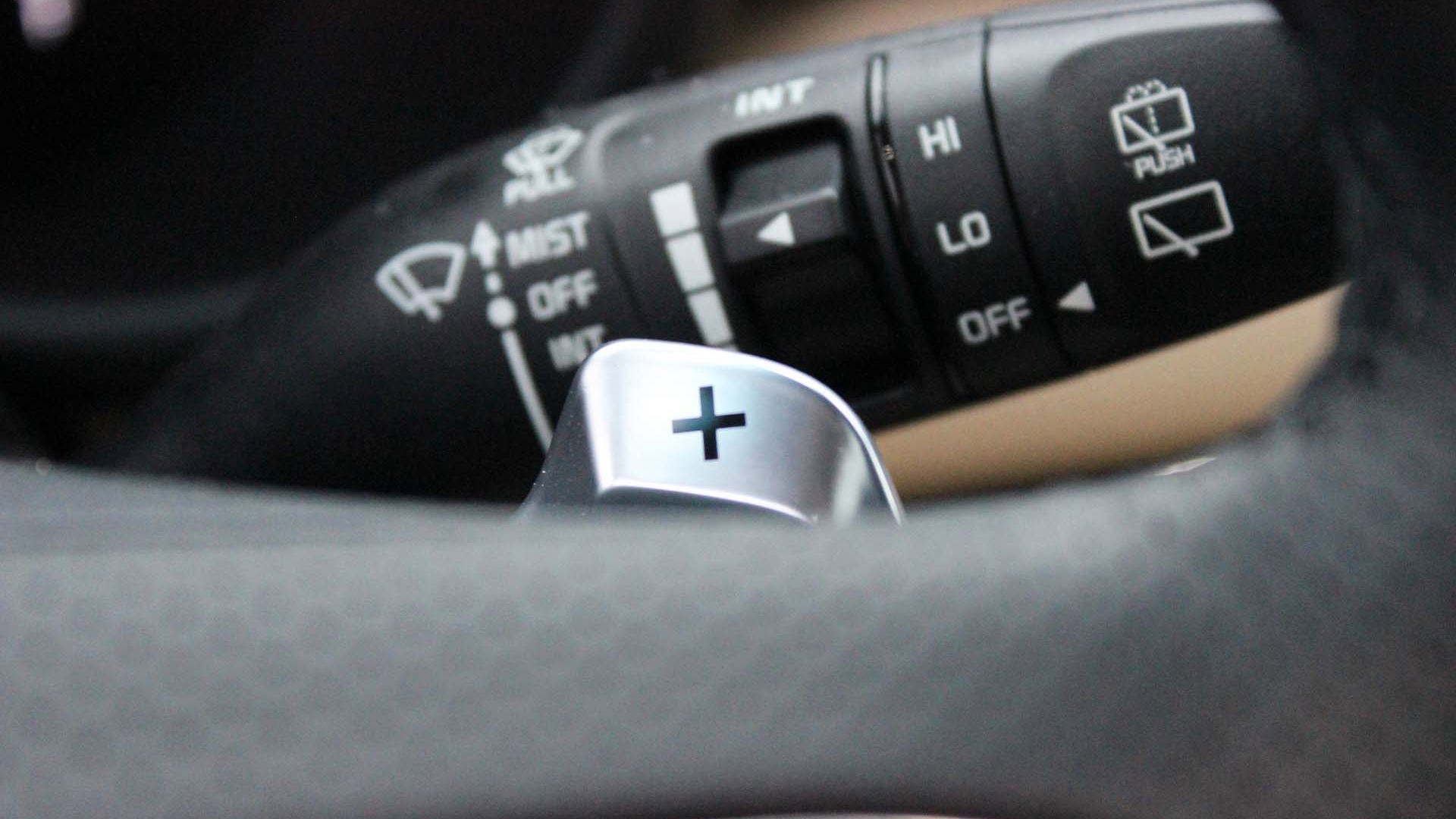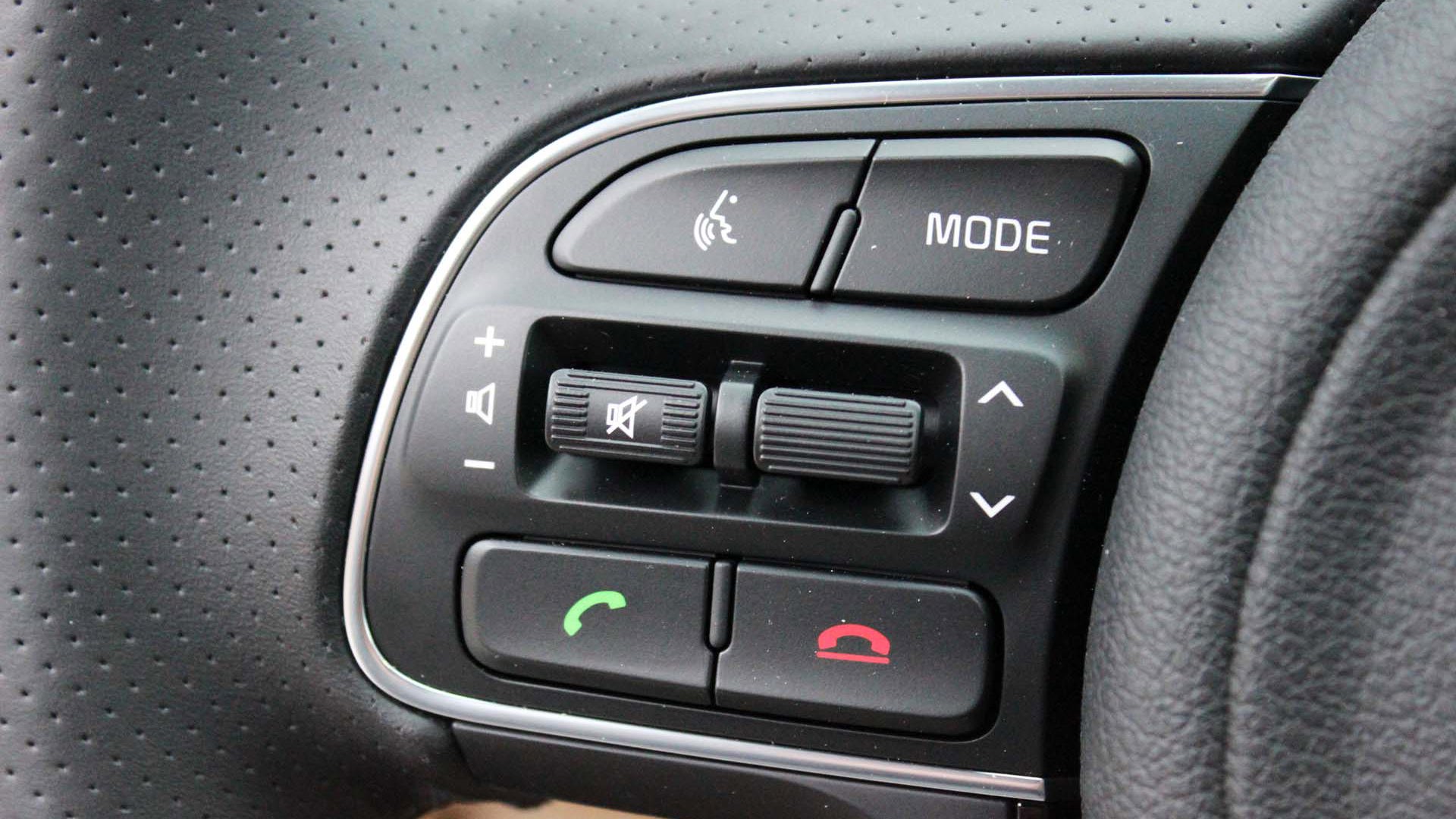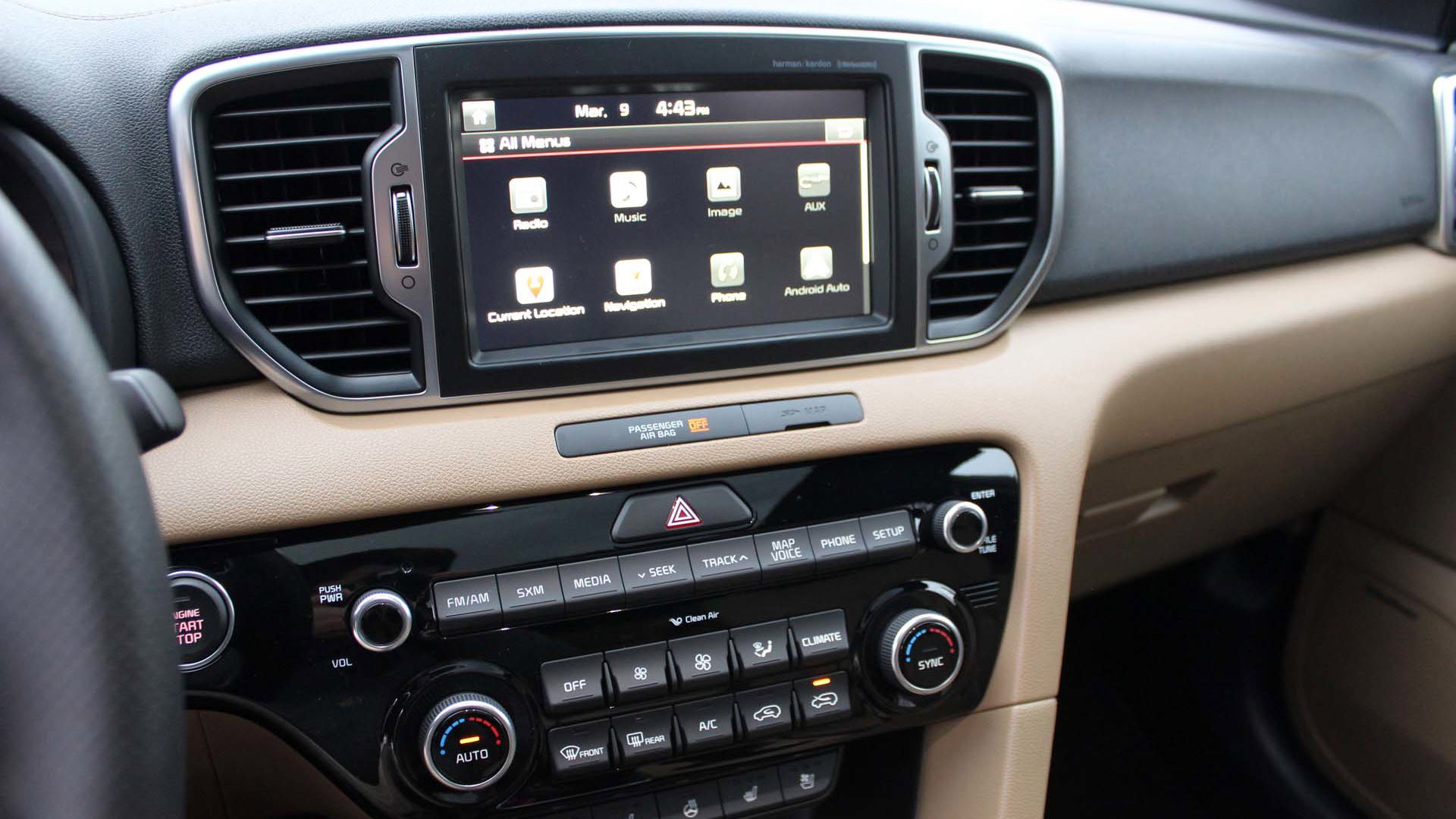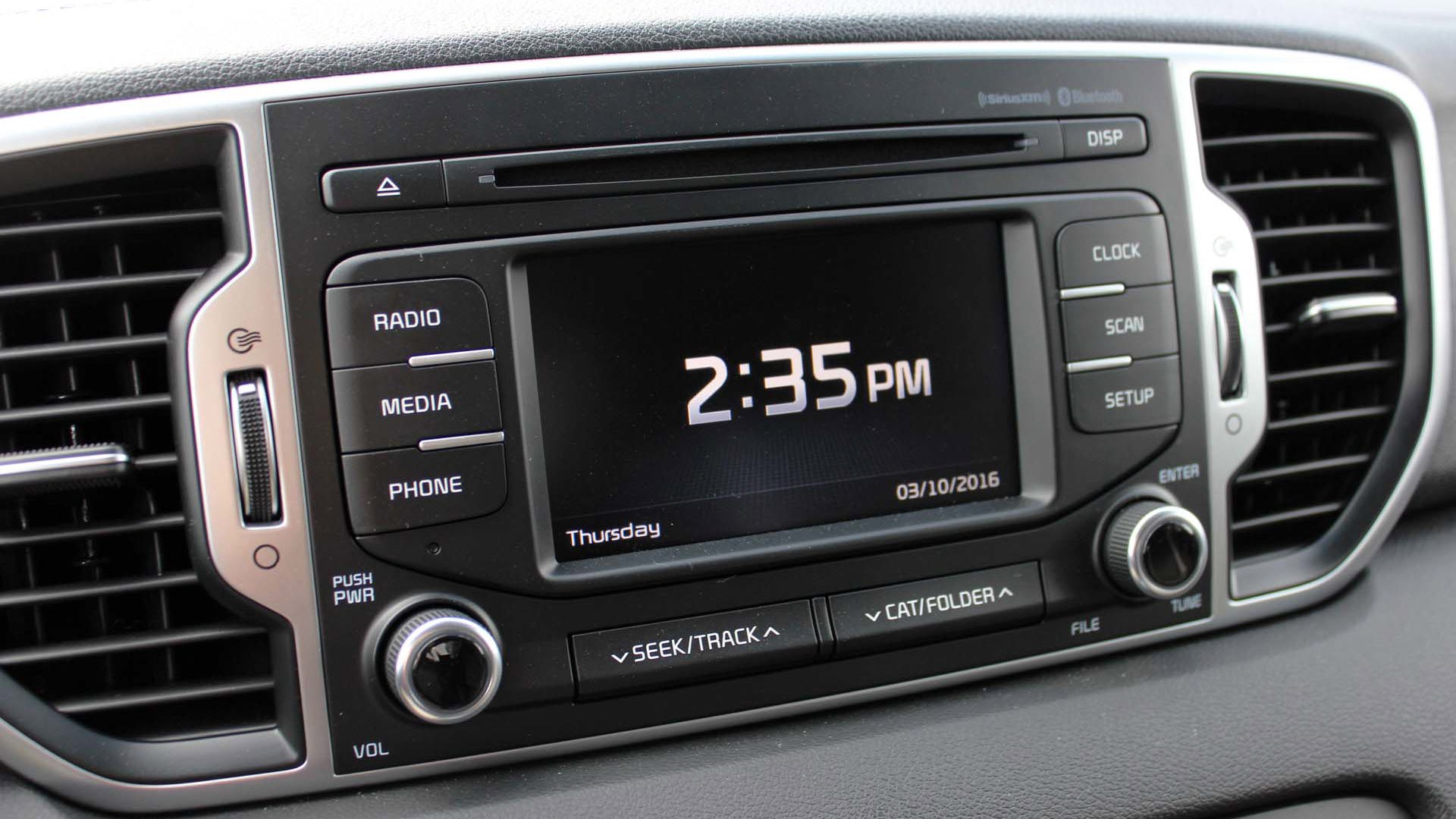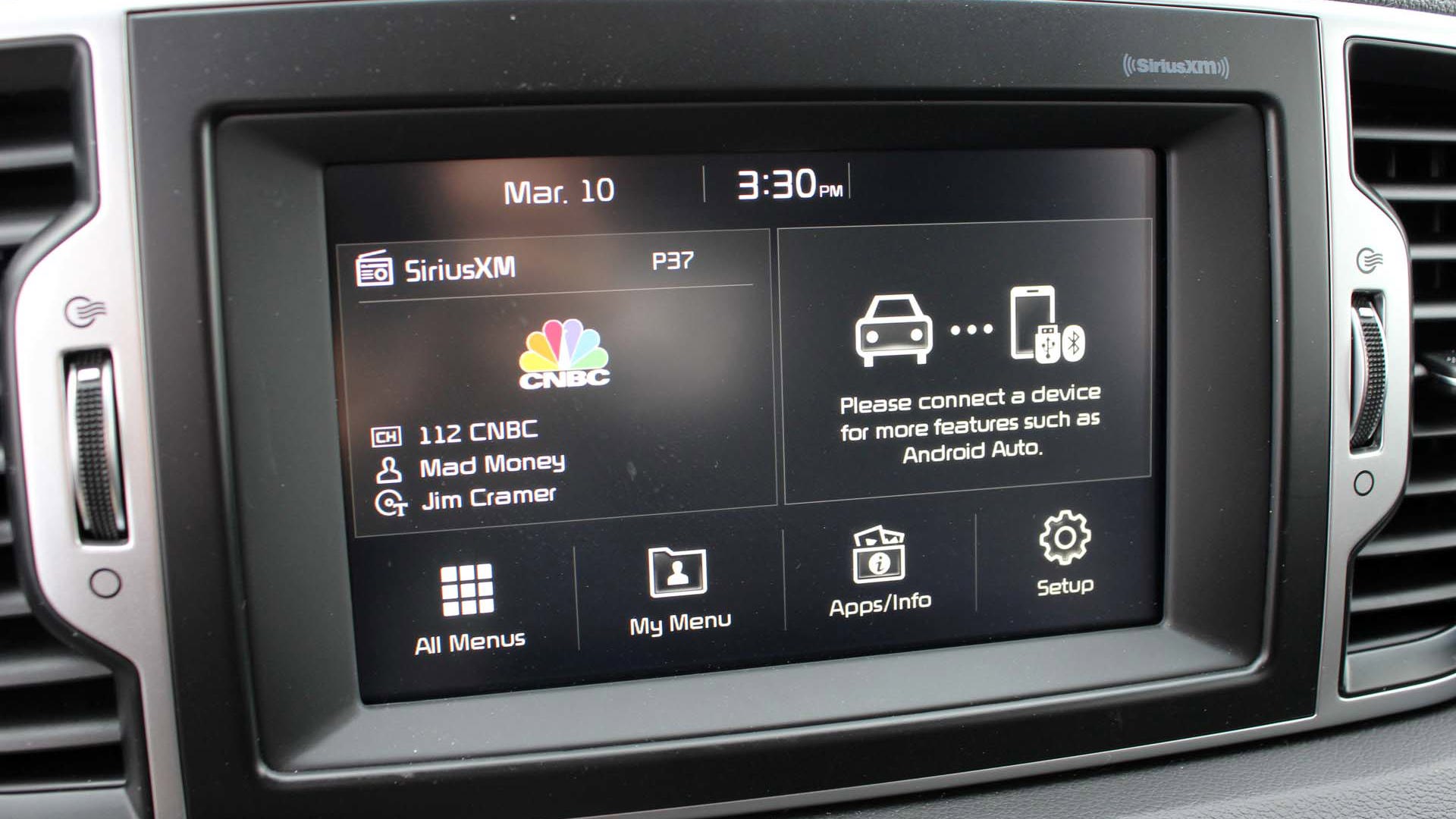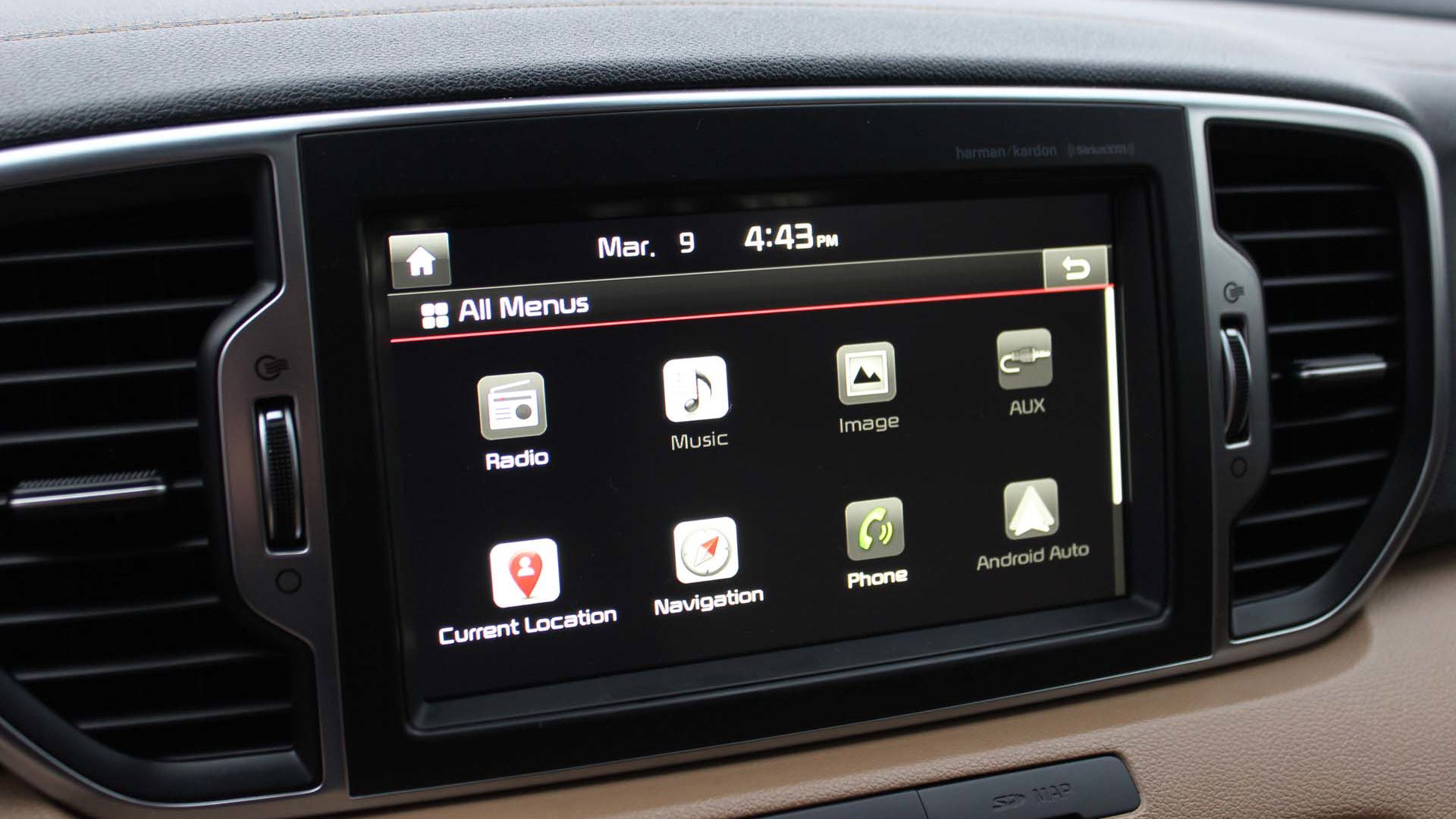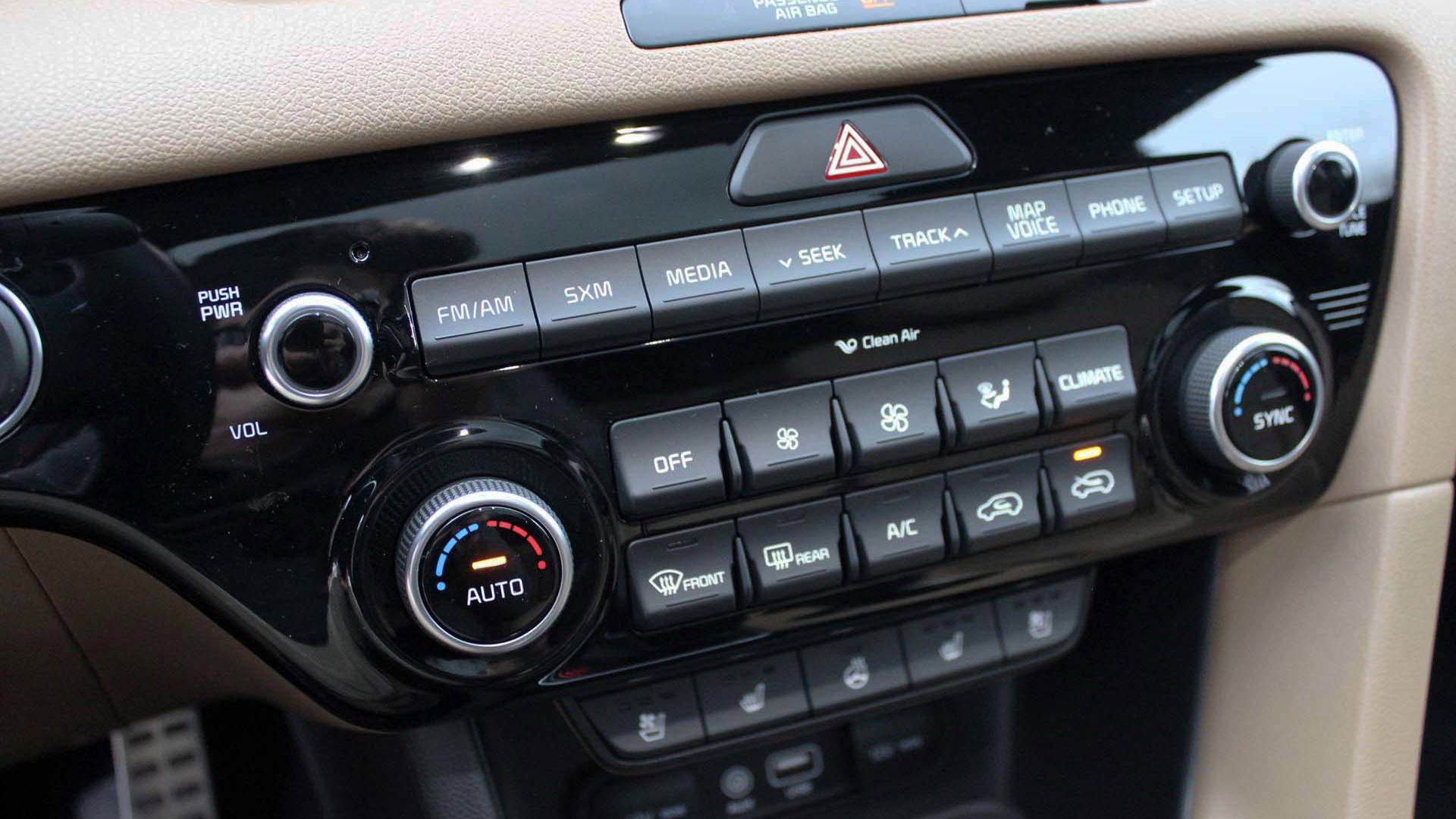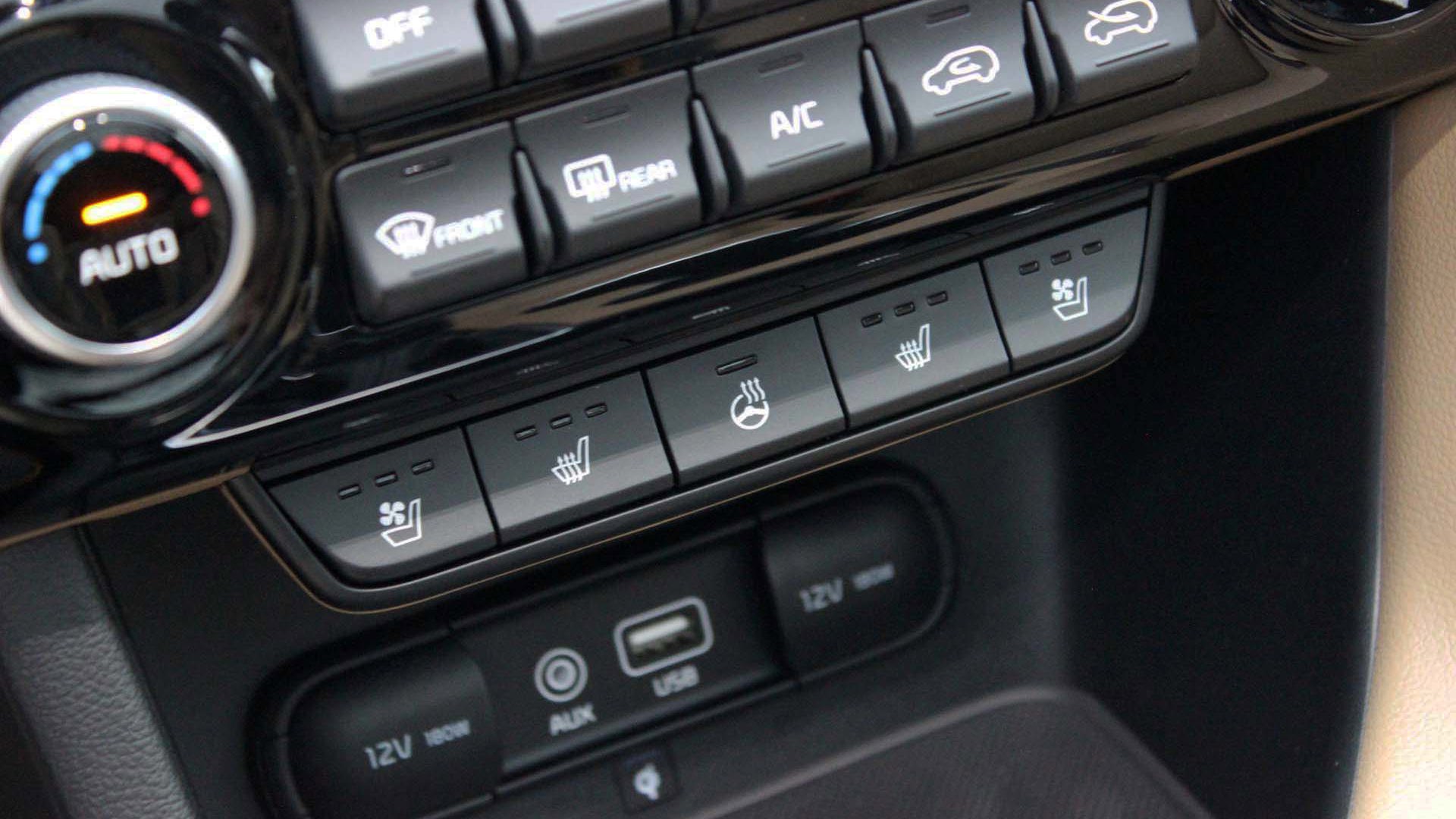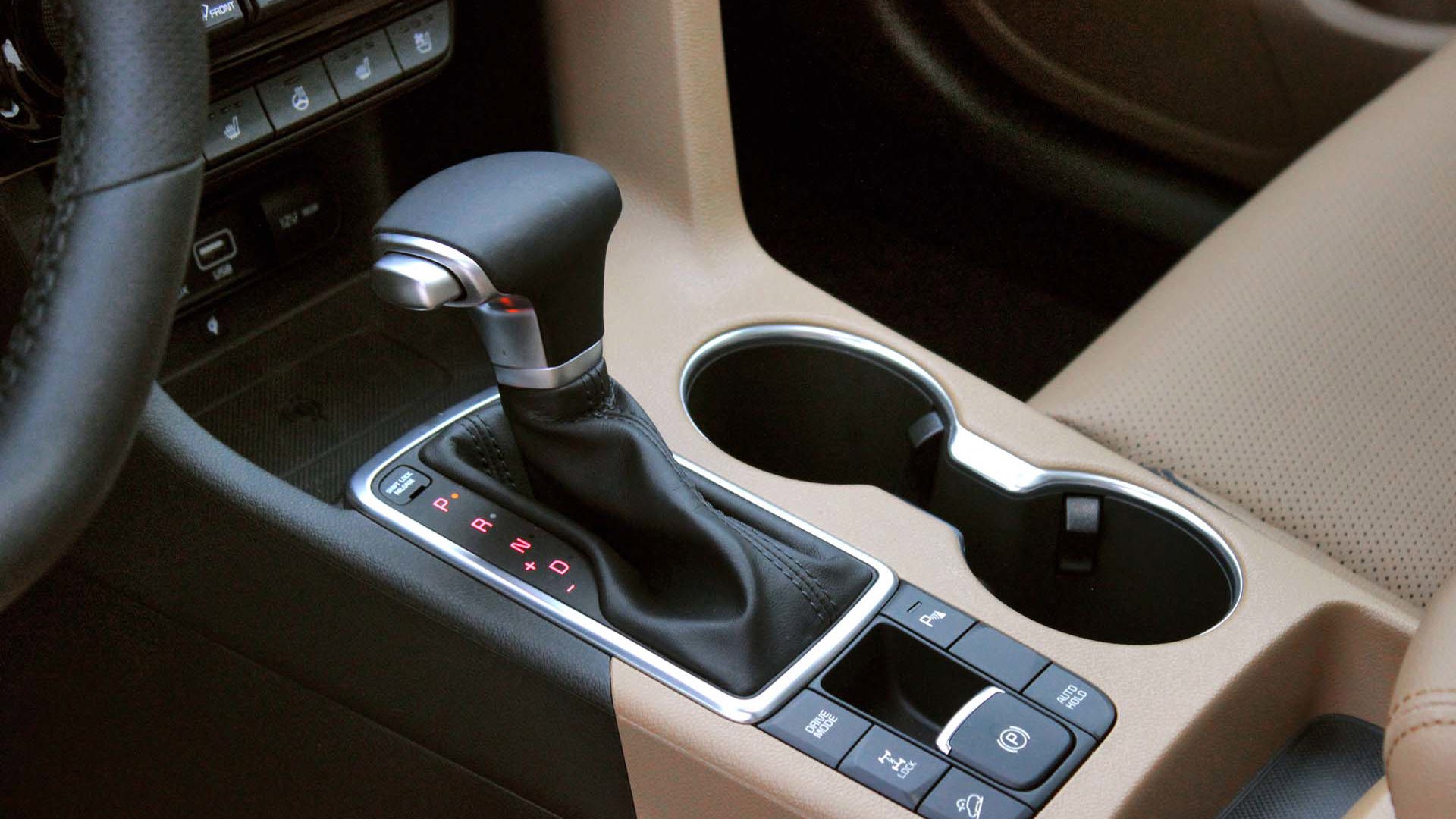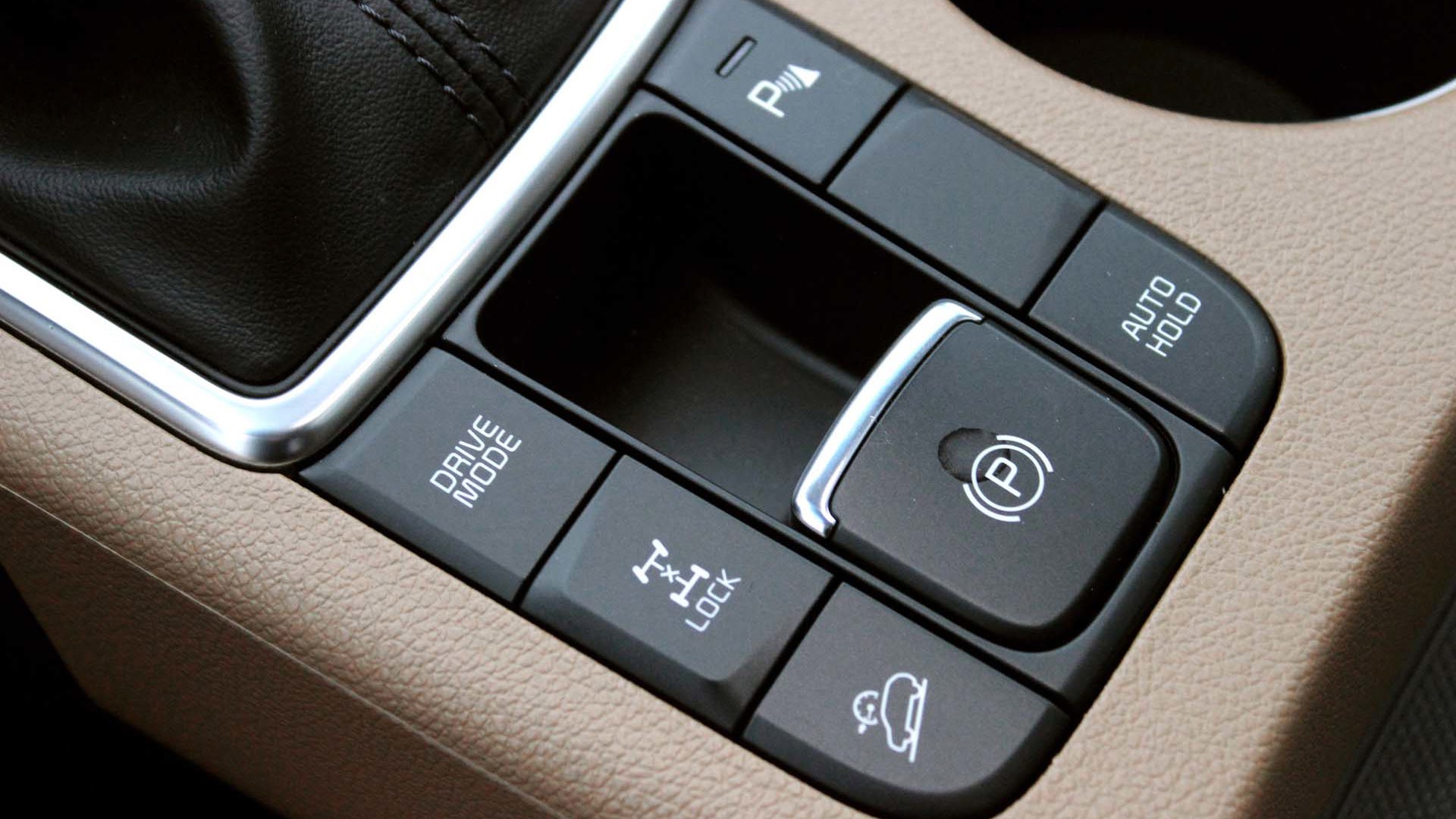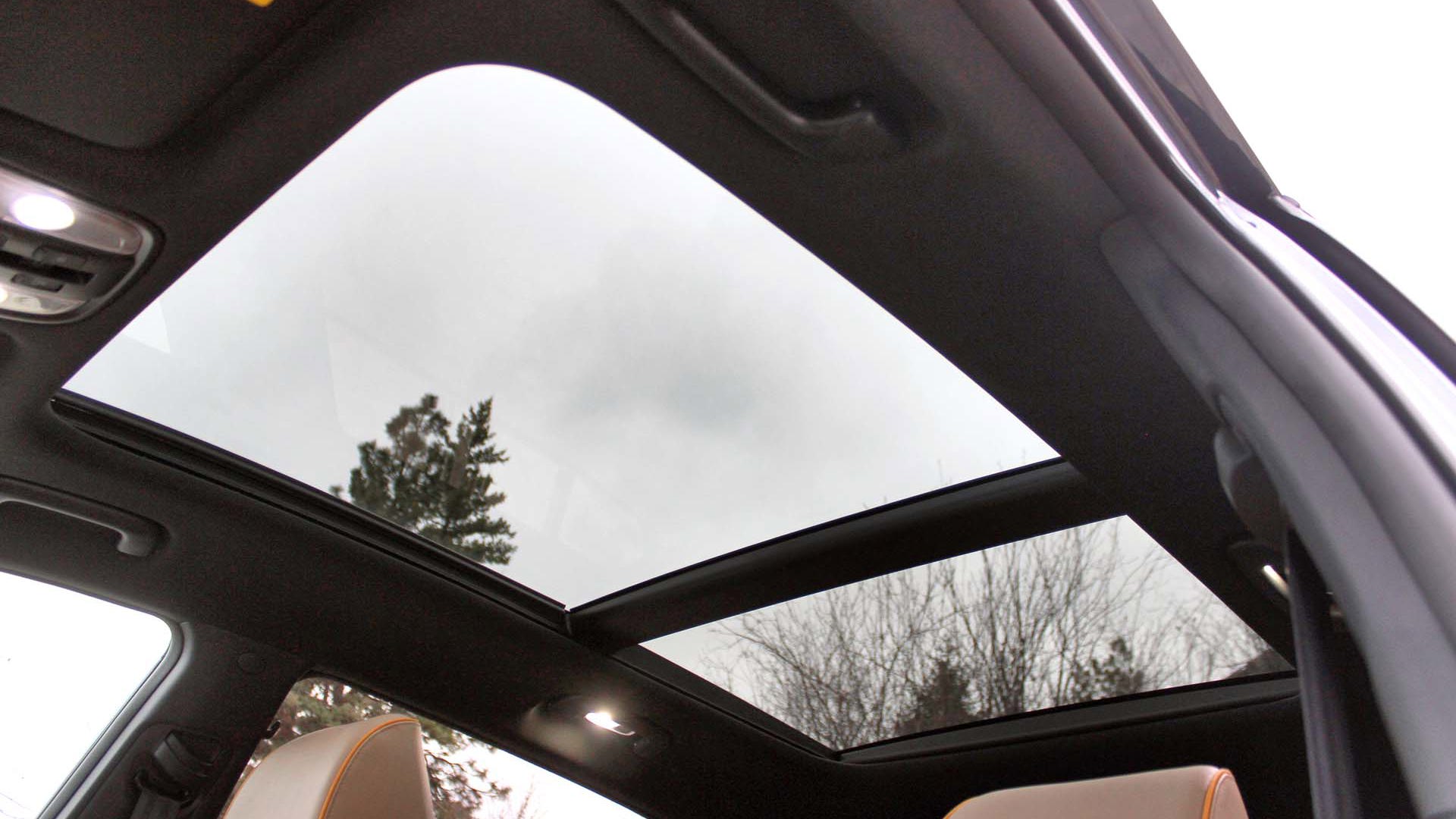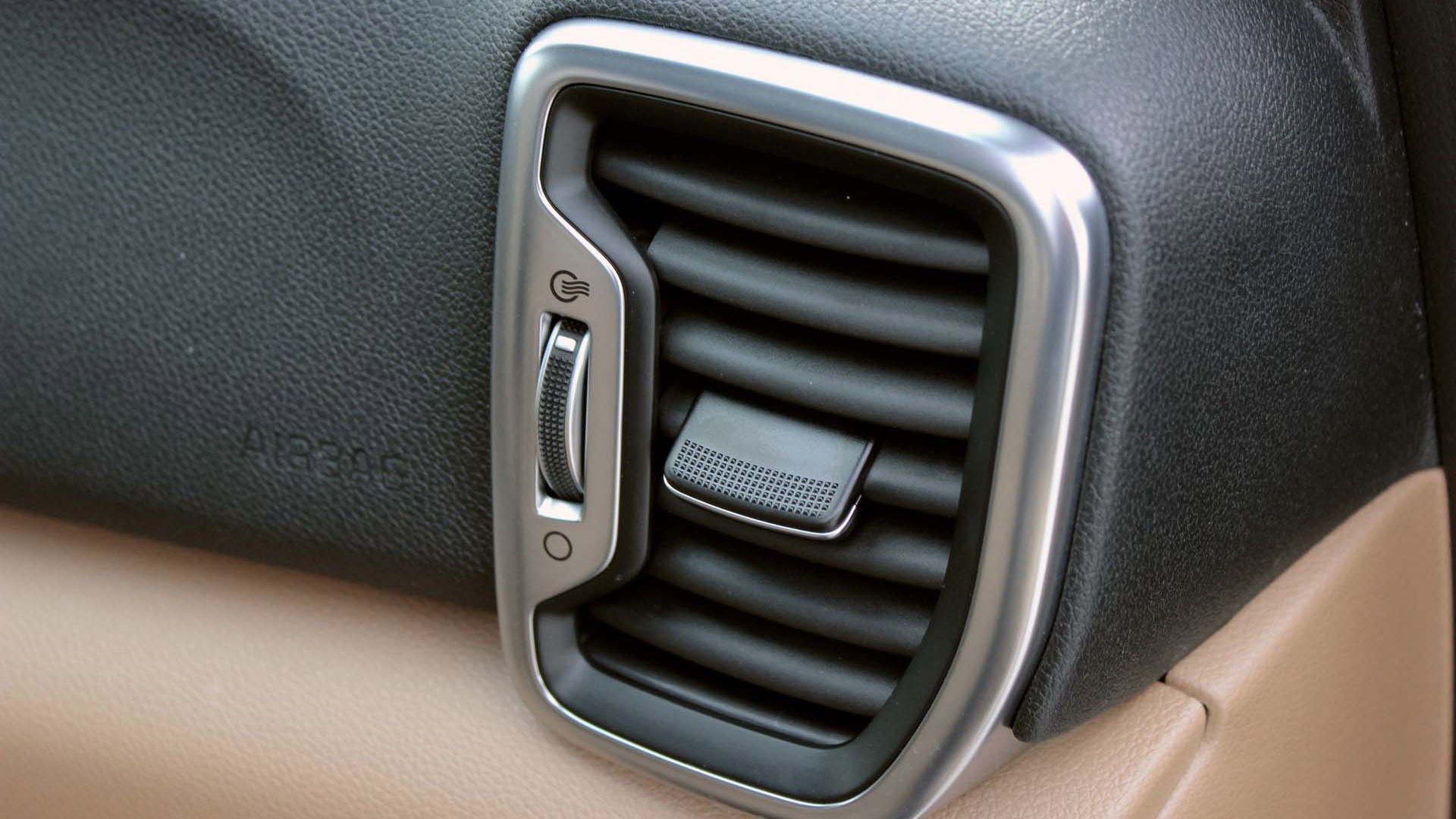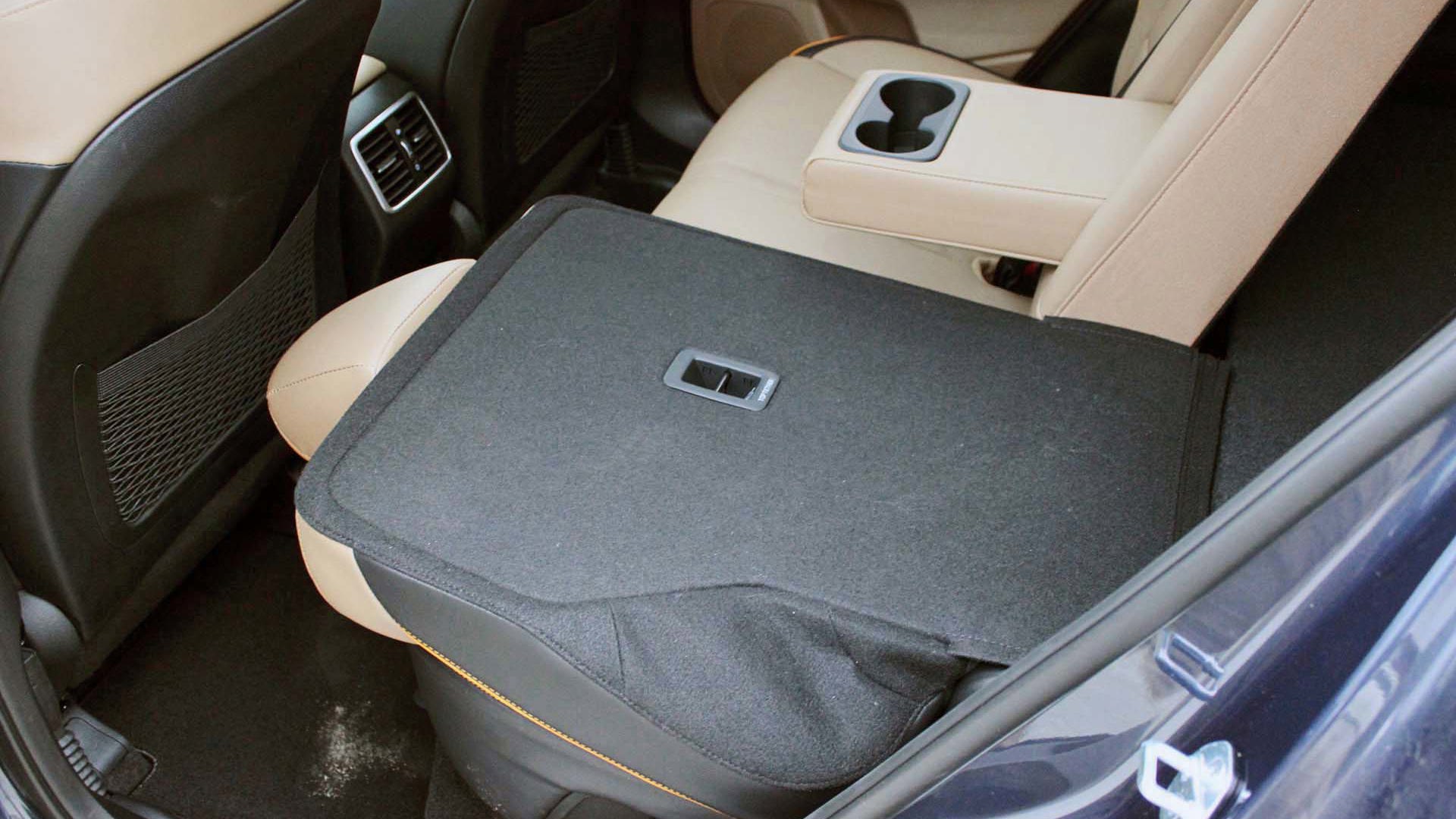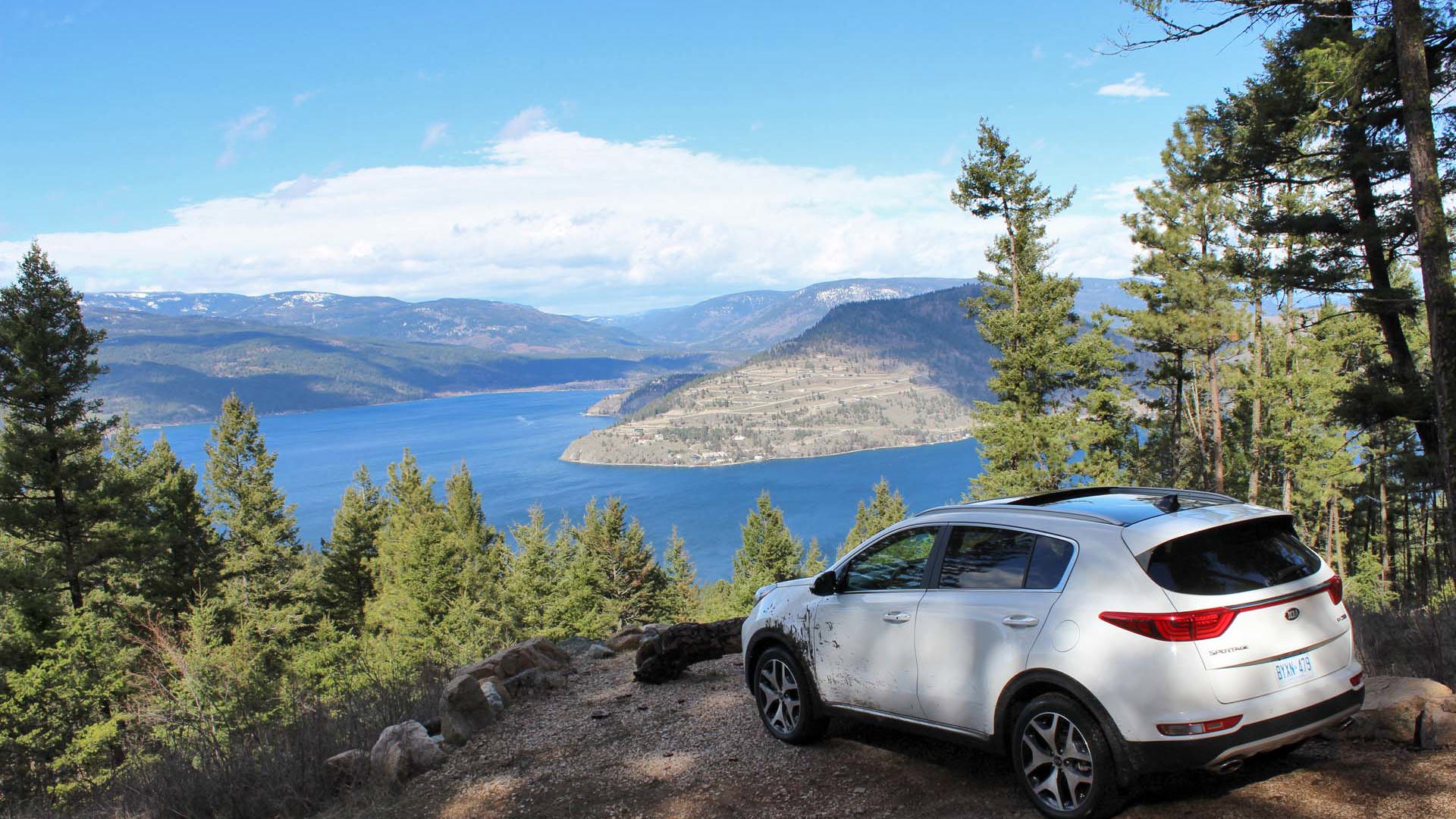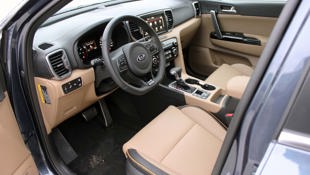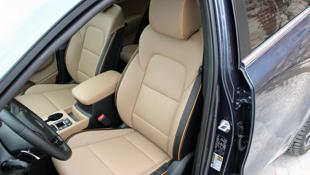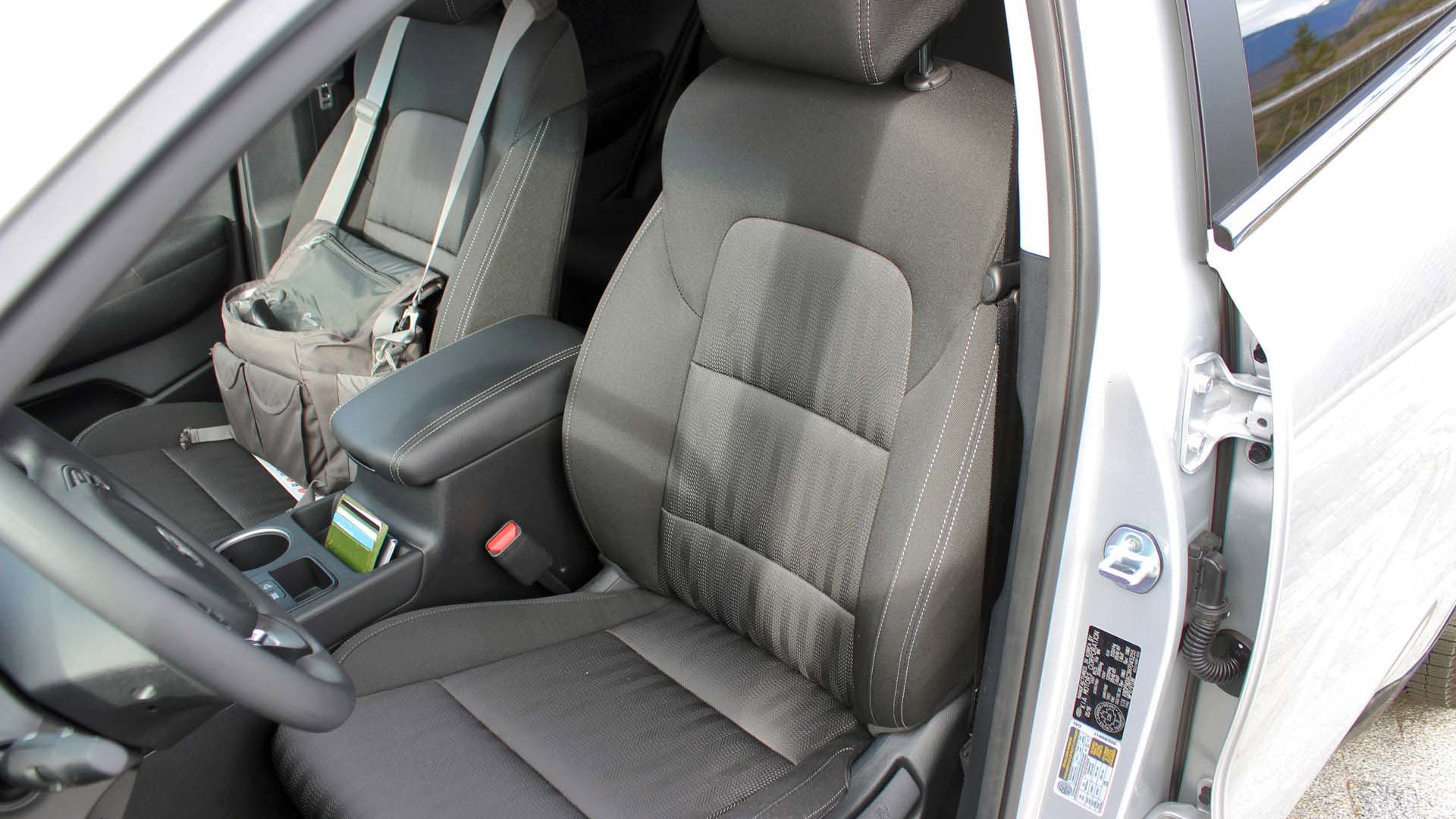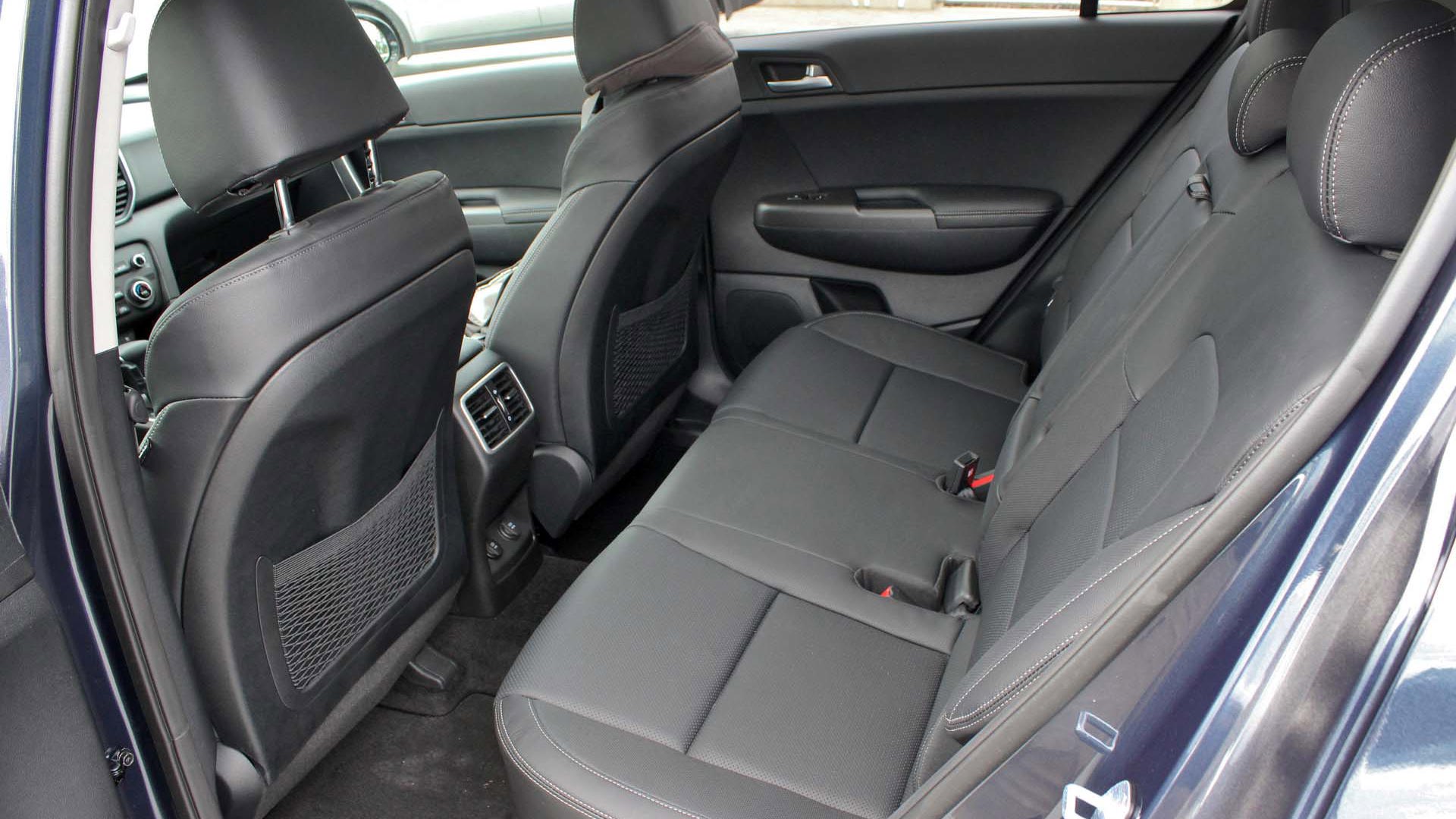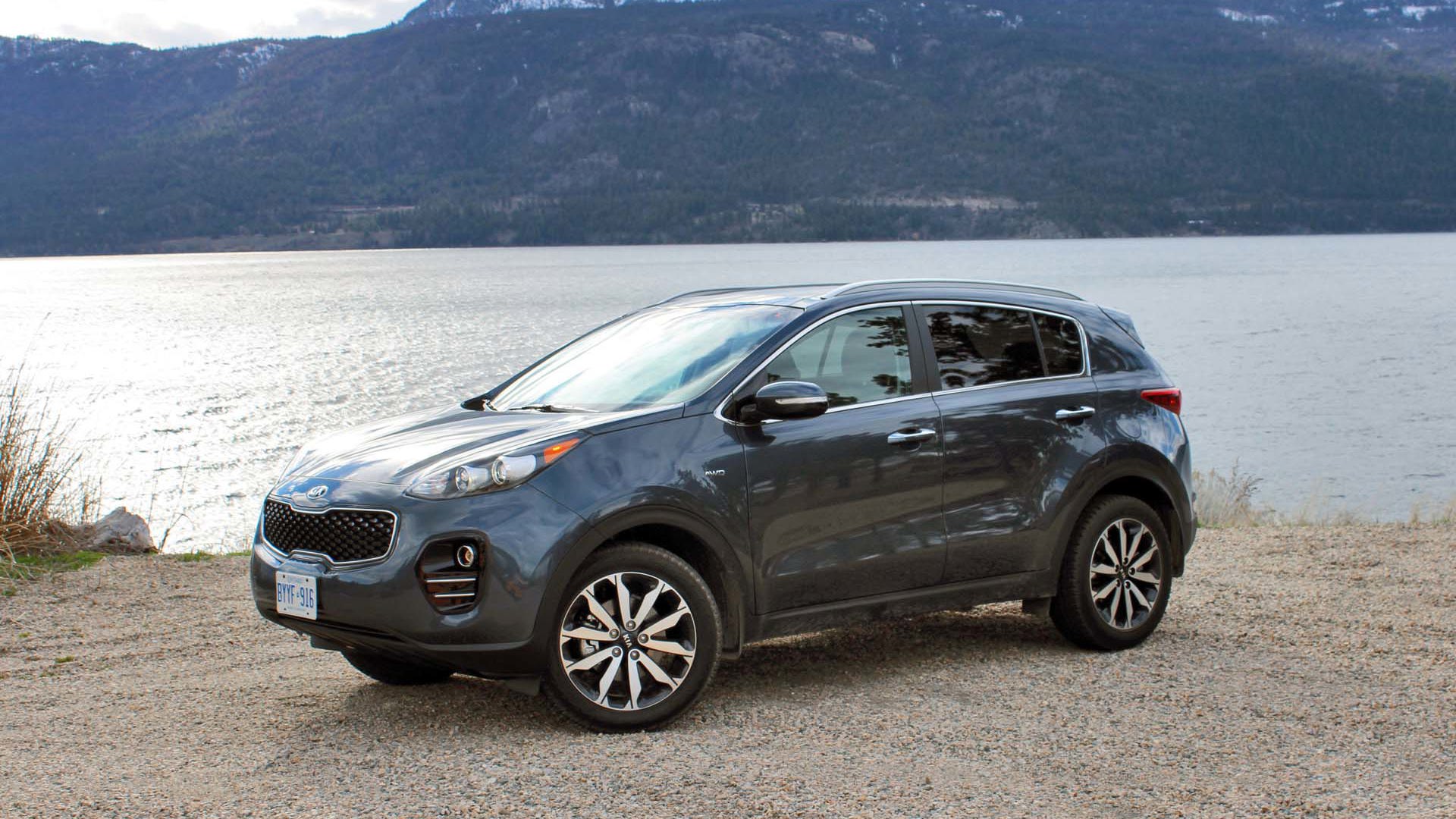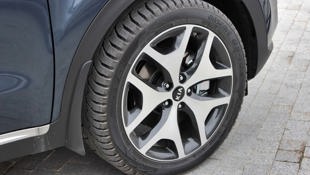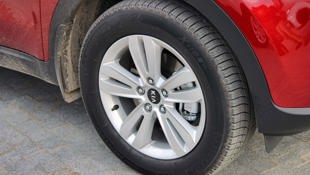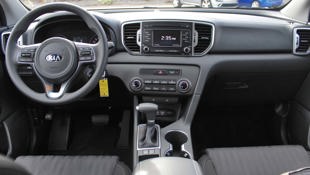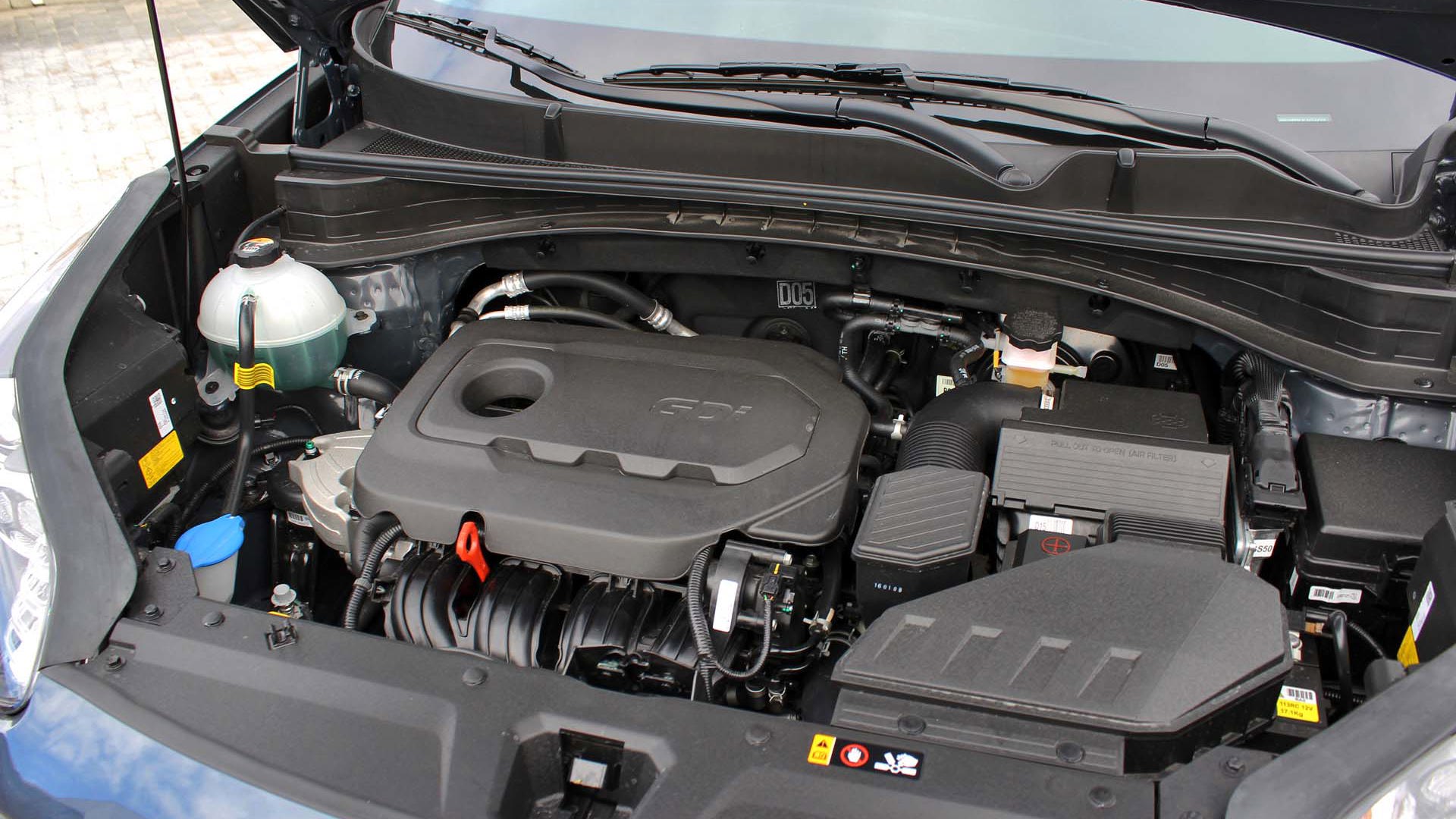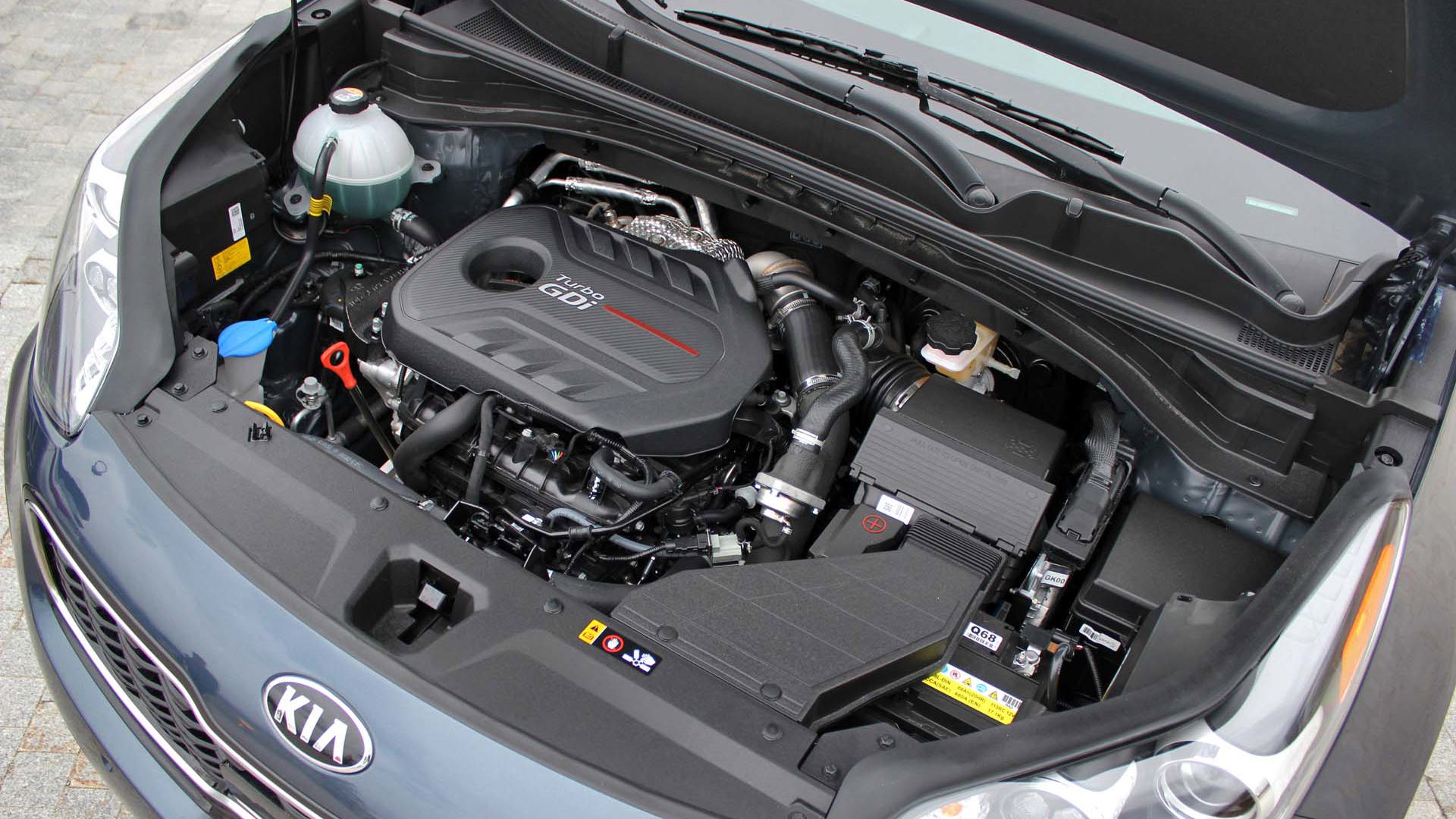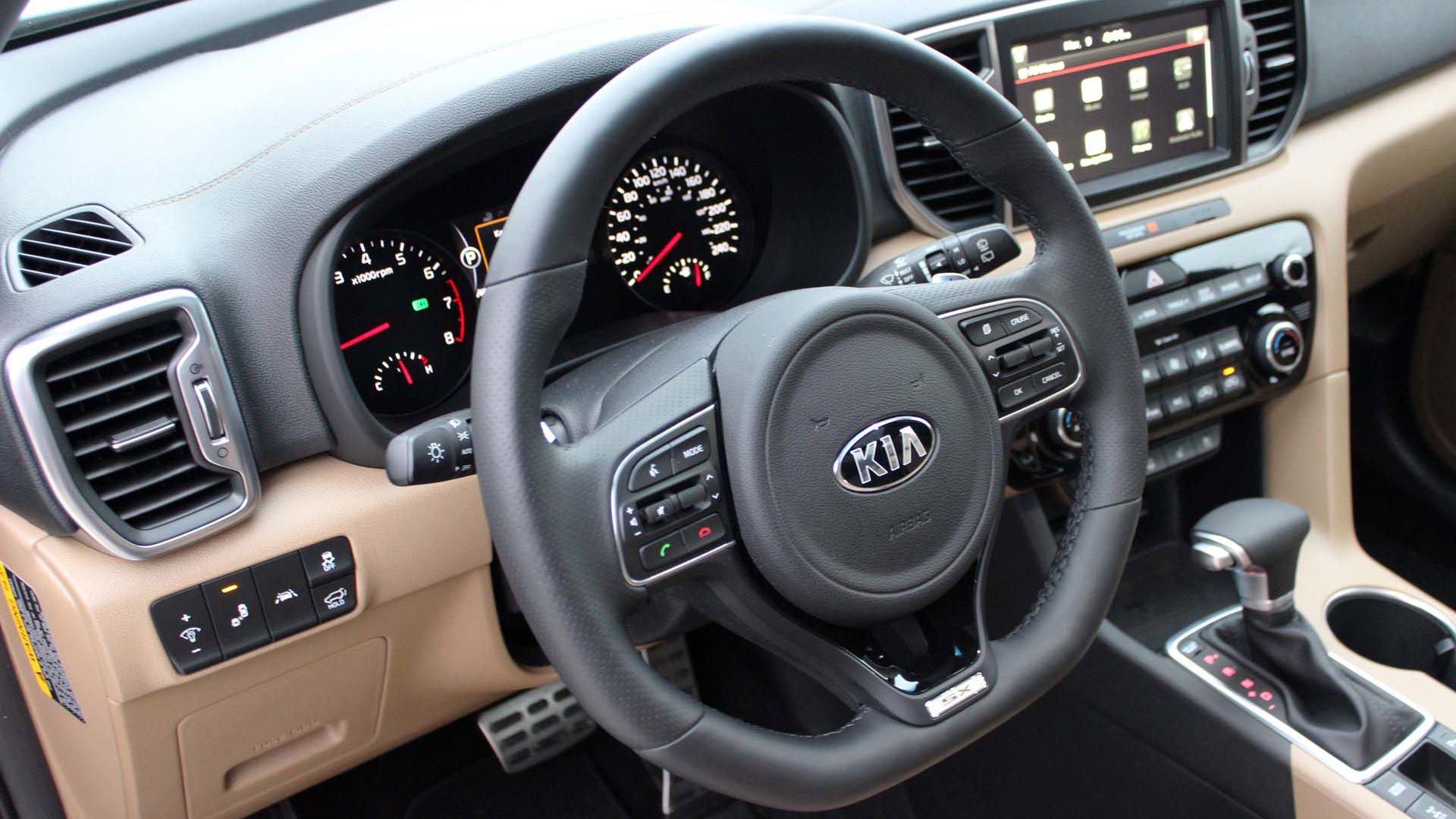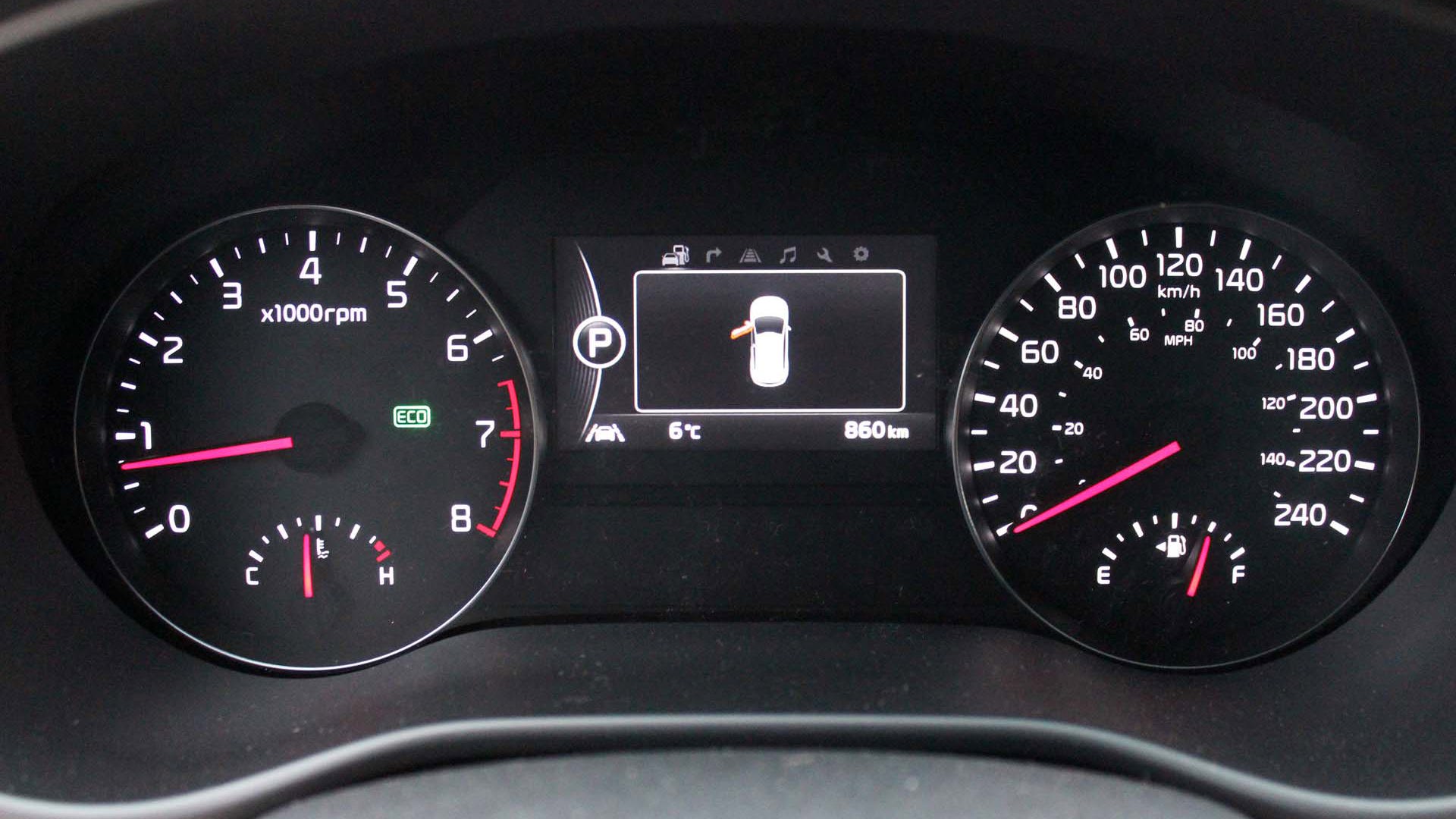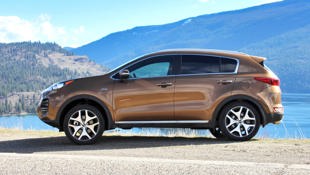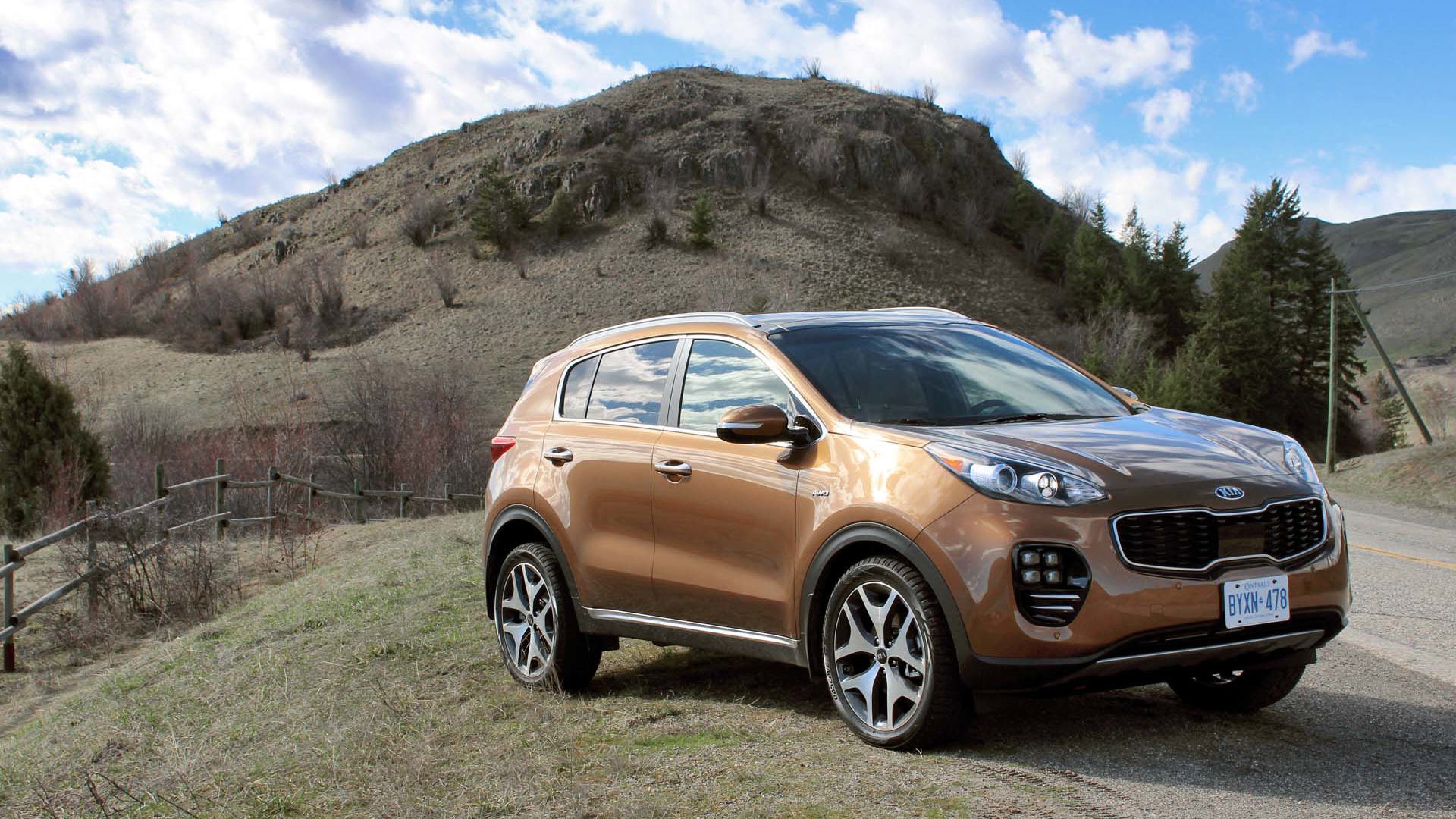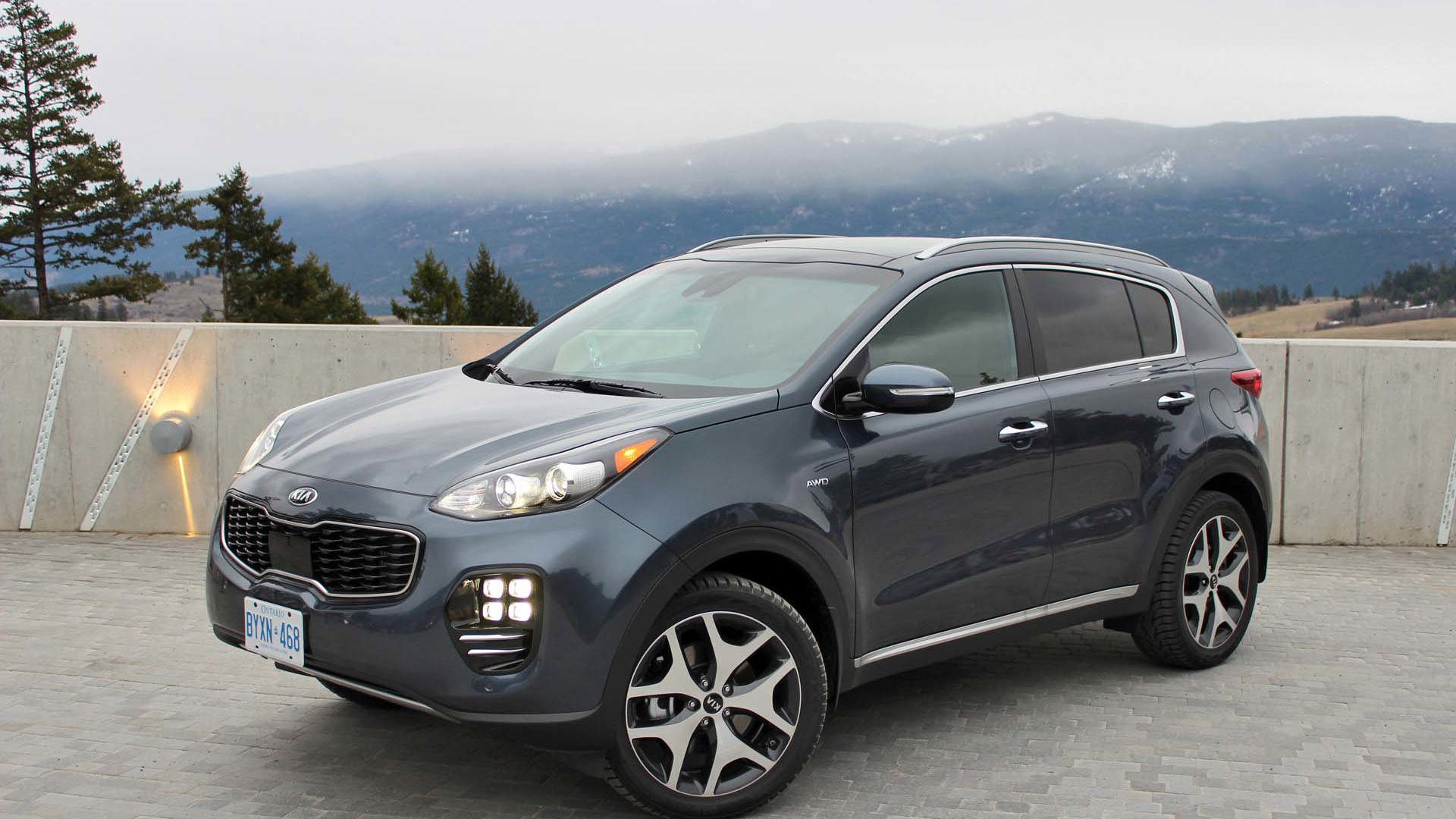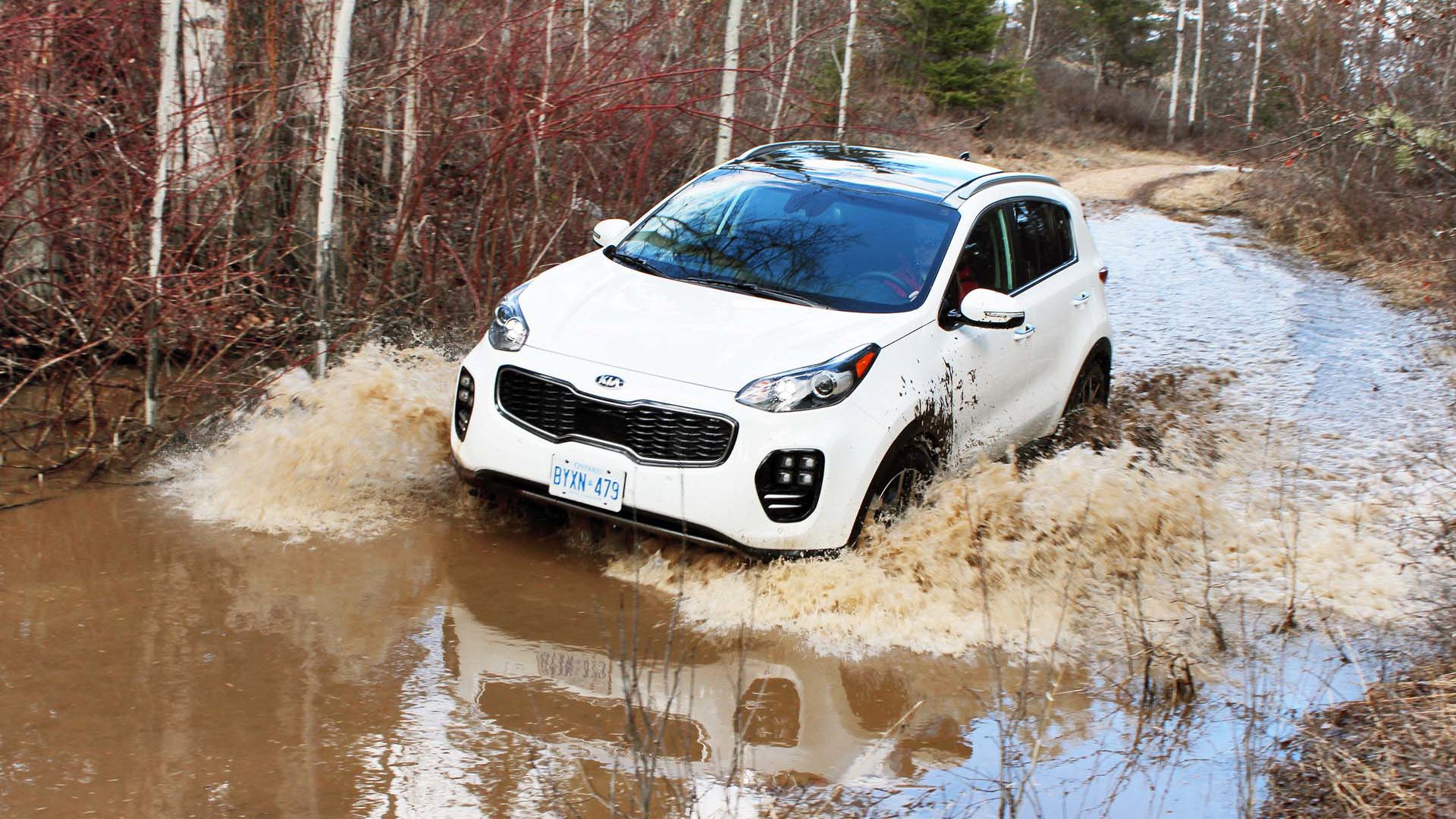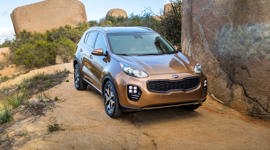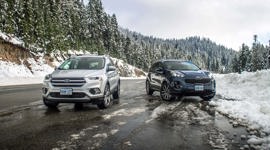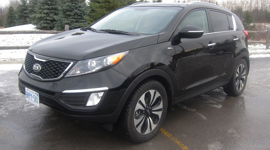You may not realize it, but the Sportage is actually one of Kia’s oldest North American models, joining the Kia lineup alongside the Sephia sedan back in 1994. Indeed, not only does that make it one of the pioneering Kias here, it makes it one of the industry’s pioneering compact SUVs/CUVs, too. That’s pretty impressive, to think that this tiny brand from South Korea was on the cutting edge of what was to become one of the biggest vehicle segments in our fair lands and around the world.
Since then, the Sportage has undergone three generational changes culminating in the fourth-generation model you see here, becoming more stylish and more popular with every iteration. Of course, “stylish” is just one way of saying it; “outlandish” is another – the last Sportage really did look like nothing else on the market – and if that’s what you believe, then you’re probably not all that surprised by the new CUV’s defining feature, the quad LED foglights, which we like to call “ice cube fogs.”
They come as standard on the SX trim – indeed, that’s the only way you can get them in Canada – and while they may seem awkward at first, there’s no denying the powerful light they emit. So much so that we had to be careful with our camera settings when trying to shoot the Sportage’s front end, as they tend to set your camera’s lens ablaze with their brightness, leading to some washed out photos. Anything below the SX trim, meanwhile, gets a more traditional-looking single-bulb treatment. Nice that you get foglamps as standard, though.
The lighting story doesn’t end there, either; directionally adaptive HID headlights come as standard on the second-from-top EX-Tech trim, and they can rotate anywhere between -7.5 and +15 degrees when travelling at 5 km/h or more. That’s pretty slick stuff, normally reserved for luxury vehicles.
For 2017, there are seven available trims: LX FWD ($24,795), LX AWD ($26,995), EX FWD ($27,795), EX AWD ($29,795), EX Premium ($32,695), EX Tech ($36,995) and SX ($39,395); all save the SX use a 2.4L naturally aspirated four-cylinder, good for 181 hp and 175 lb-ft of torque. The SX gets a turbo mill, also an inline-four, but rated at 237 hp and 260 lb-ft; that’s down on what the SX made last year, but new tuning has brought peak torque down to 1,450 rpm, improving fuel economy and engine smoothness.
For comparison’s sake: The 2.4L makes more power than any other non-turbo four in the segment save the Jeep Cherokee and Honda CR-V, and more torque than anything save the CR-V and even then, the Honda eclipses the Sportage by just 6 lb-ft. The SX, meanwhile, makes more horsepower than all other top-spec vehicles in the segment apart from the Cherokee, and more torque than everything except the Ford Escape.
Quick Hits: 10 Things to Know About the 2017 Kia Sportage
While clearly the most obvious, the ice cube fogs aren’t the only feature that defines the SX from others; since the turbo engine requires more cooling, the SX’s grille gets a tabbed look, replacing the houndstooth look from other models.
Other styling elements that are new across the board include new wheel styles – in either 17-, 18-, or 19-inch sizes (the 19-inchers on the SX are pretty out there style-wise) – new taillights that now span the entirety of the rear hatch on some models and standard roof spoiler actually make the 2017 model look a little more laid back than the old model. Colour-wise, an all-new Modern Copper hue replaces the old Digital Yellow and Orange Copper options. This, if I may, is a good thing as those colours were a little much, while the new one just looks handsome and upscale. Better still, you can have it on all trims.
Inside, the theme of the Sportage maturing takes the form of a growth spurt; there’s more room in all directions than there used to be (+5 mm front headroom, +16 mm rear headroom, +2 mm front legroom, +7 mm rear legroom and +10 mm front shoulder room; rear shoulder room remains the same) and an additional 58 L of cargo space, which grows by 70 L if you lower the adjustable cargo floor. Add the fact that the standard panoramic moonroof you get on EX Premium models and above has grown by 213 mm in length, and the cockpit is an airy place to be.
It’s also spacious enough in the back seat, even for six-foot-plus people like myself. The cockpit is, for the most part, a very comfortable place to be. It looks great, too; two new brown leather interior tints have been added to the greys and black that were available previously, and they look fantastic. Yes, they’re only available on the EX Premium and up, but if you’re going to go that way, it’s nice to have the choice. Otherwise, though, you’re left with two cloth seating options and one leather, all finished in black. The interior ergonomics, styling and space usage is mostly very good.
Except for one notable problem.
A six-speed automatic transmission is standard, and there is a manual mode that’s activated by bumping the shift lever to the left. This is nothing new. The trouble is, when you do this, the shape of the lever had it digging into my leg, and we’re not talking just brushing here; it’s uncomfortable to the point where I couldn’t stand it for more than 5-10 minutes. SX models provide paddle shifters that can be used to activate manual mode (leaving the lever in “D” and thus, out of your way), so that’s good; trouble is, you only get them on the SX. Anything else, and I know I would hardly be using the manual mode.
Everything else, though, is good; the view out has been improved by using more high-tensile steel for the A-pillars, allowing them to be thinner, thereby obstructing less of your view out. The rear window is nicely sized, too (it’s grown 30 mm in height), which is nice. And hey, if your rear passengers’ heads are in your way, just tell them to recline the seat, right? Well, maybe not, but it’s nice that the option is there.
If the modifiable floor and the almost 870 L of cargo space it provides in its low setting isn’t enough, the rear seats can be folded nearly flat, eventually resting at 8 degrees, which isn’t too bad and shouldn’t infringe too much on long-item storage and transport.
Kia’s UVO infotainment system hasn’t changed all that much from previous, which is no bad thing as it’s an intuitive, responsive interface that looks modern enough. Could it have a brighter colour palette? Maybe. Larger buttons? Perhaps, but the only real fault that we found was a navi map that could use a little more detail.
If you have an Android phone, though, that could all be moot as Android Auto comes as standard on EX FWD trims and up, likely because the lower trims’ 5-inch display is too small for the interface. You still get a backup cam with those, though, which is nice. If you get the higher trims, you get either a 7-inch or 8-inch screen (EX-Tech and above), and most of the features from your phone – Google maps, streaming audio, phone – can be accessed directly from the screen. There are plans for Apple CarPlay, too, but apparently, Android was first to the table with their tech and so Kia was able to quickly add it to the Sportage. Wireless charging is also standard, but a WiFi hotspot is not included.
Otherwise, the stock features are numerous: heated seats and steering wheel (heated rear seats and cooled fronts are standard on higher trims), backup camera, power everything, tinted side windows (surprised? Us, too), alloy wheels, vehicle stability control and management, and acoustic laminated windshield. That’s a ton of kit for a base model car. If we had to pick, tough, the EX AWD trim is a sweet spot, as it provides all those features, plus larger wheels, Android Auto support and a bigger touchscreen display, LED taillights, and sharper instrument cluster, all for a healthy amount less than 30 grand.
Another standard feature that pertains to the drive experience are adaptive dampers at all four corners. They’re not of the magnetic variety, but those damper types tend to be a little more hardcore, never quite getting soft enough to be comfortable on rougher roads.
The Sportage uses a mechanical set-up, but it works to the point that the ride quality isn’t affected, no matter the wheel size. Even with the knobby winter tires we were on, both ride quality and road noise were satisfyingly low; a manifestation of the smooth roads we were on? Perhaps, but there’s no denying that Kia has taken the ride quality seriously; the increased wheelbase helps here, too.
Safety-wise, in addition to providing a better view out, the use of high-tensile steel has stiffened the Sportage by 39 percent, making for both a more comfortable ride and more passenger safety in the event of a collision. It’s good, but if electronic safety aids are what you’re after, then you’re going to have to look to the EX-Premium trim level. There, you get blind spot detection, rear parking sensors and rear cross-traffic alert. Jumping up to the SX trim adds autonomous emergency braking, passive lane departure warning system, tire pressure monitor and rear parking sensors. I guess it’s good that you get stability control and traction control as standard on all Sportages, but I do feel they could have moved some of those safety features down a little in the lineup.
Having said that, the addition of all that safety stuff with the SX just adds more to what is already a pretty compelling package.
We found Kia’s claims about the turbo’s power drop not affecting the drive to be spot on. Yes, there’s a little bit of turbo lag once you first dip the throttle, but once you hit that 1,450 rpm mark, the surge forward is good, and you tend to forget about that hp drop pretty quickly.
Even more so if you select the “Sport” drive mode; it’s one of three available along with Eco and Normal, and it changes your spark timing and fuel delivery while also holding on to gears longer, giving you the opportunity to better exploit the power band. It also adds weight to the steering and if that’s not enough, go ahead and flip a paddle to activate manual mode, at which point shifts are carried off quickly and smoothly.
It does well to complement the now stiffer chassis, which makes tackling bendy roads a much more involving experience than you might expect from a cute ute like this. Body roll is limited, although it is felt a little more in AWD models as they ride 10 mm higher than do FWD examples. The SX’s 19-inch wheels do help hide the fact that it sits higher, as do the twin exhaust outlets; cars equipped with the 2.4L get a single outlet, and it stays hidden from view behind the rear bumper.
Eco mode works pretty much as advertised in that it deadens throttle and transmission response to the point where I didn’t feel comfortable leaving it in Eco when on the highway; there just wasn’t enough there when it came to high-speed passes, freeway entrances et cetera. Best leave it for the city, put it in Normal when cruising the highway and activate Sport when you want a more involving ride.
The base 2.4L motor acquits itself rather well, as long as you’re willing to put up with the buzzy engine note as you reach peak hp and torque at 6,000 and 4,000 rpm, respectively. Happily, passing at high speeds does not take as much of a hit as I’d originally thought it would, again as long as you prepare yourself for the buzzy engine note.
Which is really the only thing you’re going to hear no matter which Sportage you drive, as road and wind noise is nicely absent from the proceedings. The stiffened structure helps reduce wind noise, while the acoustic laminated windshield and thicker side windows, along with a flatter underbody (made even flatter in AWD trim, as more protection is needed for the occasional off-road adventure AWD Sportages may be embarking upon) help reduce wind noise.
In addition to the adaptive suspension, AWD Sportages get hill descent control, a locking centre differential and the ability to have power sent to whichever wheel needs it when in slippery conditions or when needed to curb understeer or oversteer. In normal driving, the torque split sits at 95:5 front:rear, but up to 100 percent of torque can be sent to the rear axle if need be.
In an effort to put their money where their mouth is when it comes to their AWD system, Kia actually had us take the cars on a steep, muddy off-road course during the launch to prove their worth. The cars acquitted themselves well, never sticking in the muddy bits of the trail, and exhibiting little to no wheelspin when climbing. That’s impressive, considering the stock rubber we were on.
Hill descent control, for its part, is activated with the press of a button. The speed at which it limits your descent is fixed, but it’s nice that adding throttle if you want to go quicker will not defeat the system, which stays on until you deactivate it with a button press.
I’d have to say that as good as the turbo engine is, as quiet as it is inside the 2017 Sportage and as spacious as the passenger and cargo compartments are, it’s the off-road performance that was the big takeaway for me. It acts as a bit of a microcosm of the Sportage experience; Kia knows how important this segment is, and they have stopped at nothing to ensure that it ticks all the boxes, from capability to comfort to performance and even to luxury. Yes, a few more safety aids available at lower trims would’ve been nice, but other than that, the Sportage works well at the outset of its existence, and it will be interesting to see what happens when we put it up against some of the other leaders in the class.
Pricing: 2017 KIa Sportage
LX FWD: $24,795
LX AWD: $26,995
EX FWD: $27,795
EX AWD: $29,795
EX Premium: $32,695
EX Tech: $36,995
SX: $39,395
